Best Classic Movies: The Top 40 Of All-Time
Our definitive list of the best classic movies of all time, a list led by Citizen Kane and Casablanca. Skip to the movie you want using the Quick List.
- 1. Citizen Kane
- 2. Casablanca
- 3. All About Eve
- 4. Psycho
- 5. Singin’ in the Rain
- 6. Vertigo
- 7. Double Indemnity
- 8. Some Like it Hot
- 9. 12 Angry Men
- 10. The Third Man
- 11. Seven Samurai
- 12. Tokyo Story
- 13. The Maltese Falcon
- 14. Gone with the Wind
- 15. Lawrence of Arabia
- 16. Wizard of Oz
- 17. It’s a Wonderful Life
- 18. It Happened One Night
- 19. The Godfather
- 20. Sunset Blvd.
- 21. Rear Window
- 22. The Treasure of the Sierra Madre
- 23. The Apartment
- 24. Dr. Strangelove
- 25. On the Waterfront
- 26. Grapes of Wrath
- 27. North by Northwest
- 28. The Adventures of Robin Hood
- 29. Metropolis
- 30. Bride of Frankenstein
- 31. A Streetcar Named Desire
- 32. King Kong
- 33. Repulsion
- 34. The Night of the Hunter
- 35. The Good, The Bad, and The Ugly
- 36. Pinocchio
- 37. Rashomon
- 38. Snow White and the Seven Dwarfs
- 39. Nosferatu
- 40. Anatomy of a Murder
- Great Movies That Just Missed The List
Like a fine wine, some movies seem to get better with age. While each new mega-blockbuster hit gets labeled with the term “instant classic,” it’s the best classic movies that have stood the test of time. These are the ones that actually make an impact on the art of cinema.
Our movie experts have scoured the history of Hollywood films to find the best classic movies – the ones that have made this impact and continue to influence movie watchers even now, decades after they premiered.
These trailblazing films pushed the boundaries of what had been shown on screen before, as they told stories that were ahead of their time. They changed (or even created) genres, invented new technologies for storytelling and told stories so human that movie buffs a hundred years from now will still relate. That is what makes these the best classic movies of all time.
While there is no true science to figuring out the best classic movies, there is no doubt that this (unscientific) list includes only films that have continued to influence audiences and filmmakers for generations.
These are movies that you will want to watch over and over, whether because they make you laugh, make you cry, or make you feel things only the best classic movies could. So grab your popcorn and a comfy blanket because the best classic movie marathon is about to begin.
Best Classic Movies: All-Time Top 10
1. Citizen Kane
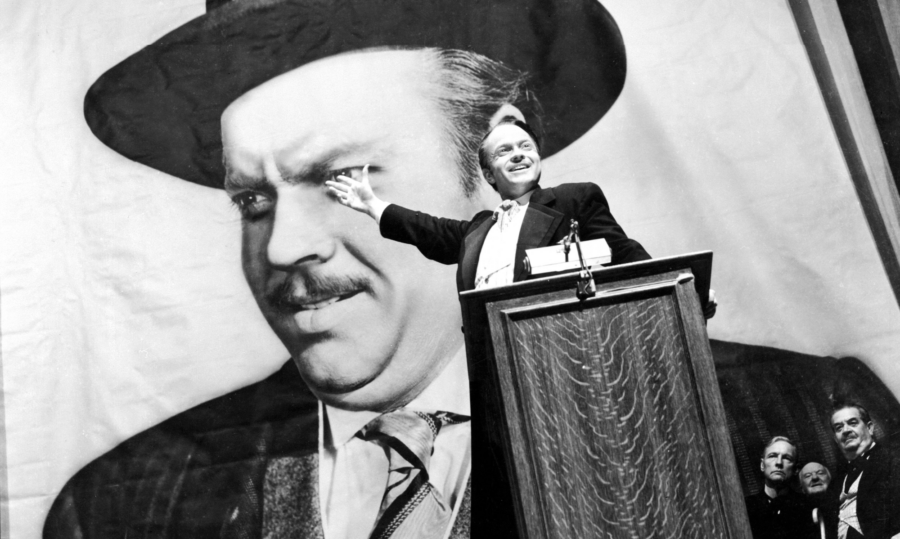
Citizen Kane has often been called the greatest film ever made, starring what many consider to be the greatest actor ever to grace the big screen, Orson Welles. What made this film even more remarkable was the fact that it was the very first film Welles made for RKO Pictures after they had been tempting him for years to move over from radio to film. Not only was Welles the main actor in Citizen Kane, but he also co-wrote the script and directed the film.
The film, loosely based on the lives of newspaper tycoons, William Randolph Hearst and Joseph Pulitzer, examined the life of Charles Foster Kane (Welles) from his early childhood to his rise as the world’s wealthiest publishing magnate. After Kane’s death, the scramble is on to figure out the meaning behind Kane’s final utterance – “Rosebud.”
The film, made in 1941, was an immediate critical success, but it failed to become a hit at the box office. Citizen Kane then faded away for years, finally coming to the forefront again in 1956 when French critics began to hail the film as one of the best ever. This, despite Hearst’s never-ending attempt to derail the film’s release once he found out the film was based on his life.
The years since the controversies that followed Welles and Citizen Kane were very good for both the actor and the film. The film now sits with a 99 percent critical rating on Rotten Tomatoes and is twice ranked number one on the American Film Institute’s list of top all-time films.
If you have yet to see this masterpiece, do yourself a favor and check it out. You will then understand why Citizen Kane continues to be called the most influential film of all time.

Reviewer
2. Casablanca
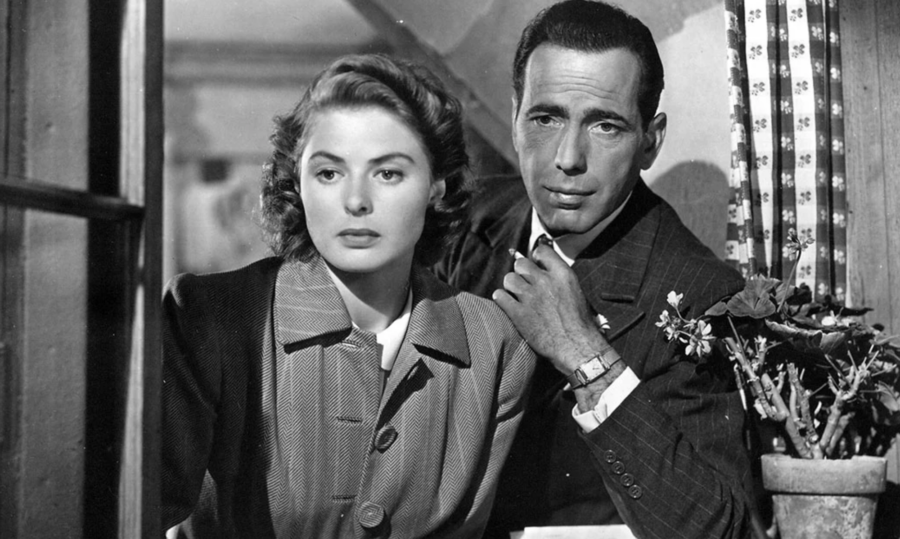
There are many reasons Casablanca has stood the test of time and continues to be called one of the greatest classic movies of all time. First off, there are the film’s three stars – Humphrey Bogart as Rick, Ingrid Bergman as Ilsa, and Paul Henreid as Victor Laszlo. What a trifecta of talent, right there.
Secondly, Casablanca has some of the most memorable lines in movie history. “Here’s looking at you, kid,” “We’ll always have Paris,” “Kiss me as if it were the last time,” and, of course, “Of all the gin joints, in all the towns, in all the world, she walks into mine.”
Casablanca is a 1942 classic that tells the story of Rick Blaine, an American expatriate who, upon meeting Ilsa in that fateful gin joint, must choose between his love for her or helping her husband, Victor, a Czech resistance leader, escape and continue his fight against the Germans.
The film also boasts Hollywood heavyweights like Peter Lorre, Claude Rains, Conrad Veidt, and Sydney Greenstreet.
Although Casablanca was a hit from the start, over the decades, it has only grown in stature, even with what the Los Angeles Times has called “resonantly hokey dialogue.”
This “dialogue” did not stop noted film critic Leonard Maltin from calling the film “the best Hollywood movie of all time.” The movie also had film critic Roger Ebert claim the film’s popularity and brilliance are because “the people in it are so good,” and to him, it is simply a “wonderful gem” of a movie.

Reviewer
3. All About Eve
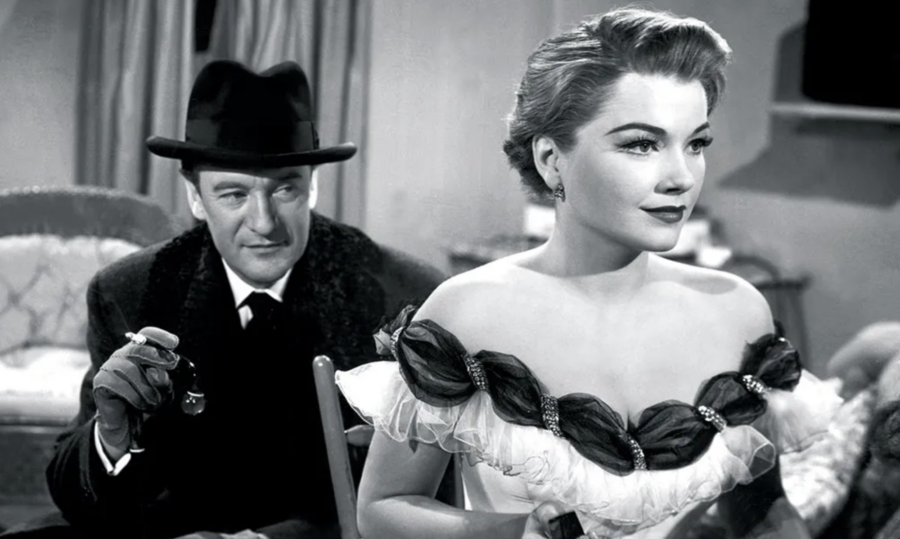
In 1998, the American Film Institute named All About Eve one of the 100 best American films, and it’s easy to understand why. The movie broke records at the time by receiving 14 Academy Award nominations, winning Best Picture in 1950.
Starring Bette Davis and Anne Baxter as feuding Broadway stars, All About Eve is regarded as the only movie in the history of the Academy Awards to receive four female acting nominations.
Directed by Joseph L. Mankiewicz, All About Eve has Bette Davis as the aging Broadway actress Margo Channing in a career-defining role. Anne Baxter portrays Eve Harrington, a young mentee of Margo’s whose ambition threatens Margo’s career and friendships. The film is ruthless in its depiction of conniving ploys to end careers through selfish endeavors and manipulation. c
All About Eve costars a stunning ensemble cast that includes Celeste Holm, Gary Merrill, George Sanders, Thelma Ritter, Hugh Marlowe, and a young Marilyn Monroe in one of her earliest parts. The film’s most recognizable characteristic comes from Margo’s famous line, “Fasten your seatbelts, it’s going to be a bumpy night!”

Reviewer
4. Psycho
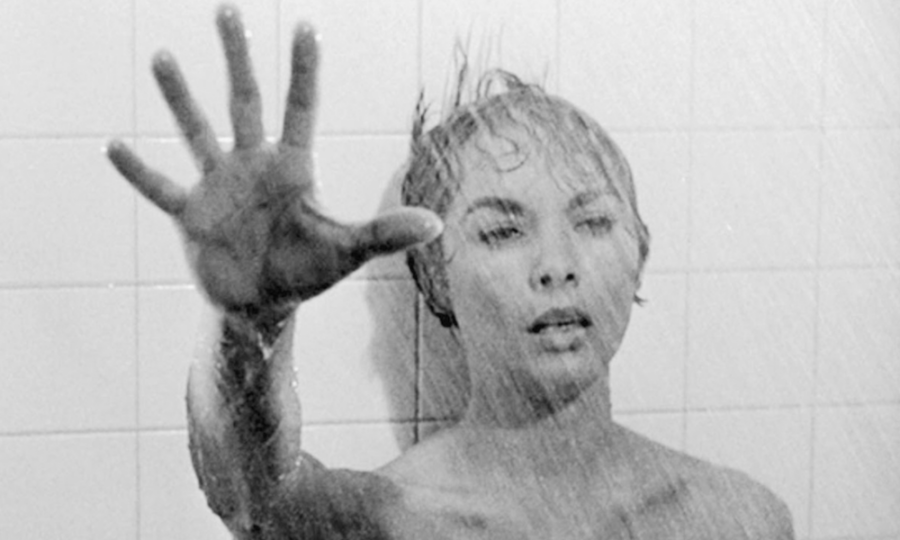
Any movie can be popular in its time, but it takes a great film to become a classic. Whether it’s a movie about something universally human or a film that on its own influences a genre permanently, a classic movie causes a lasting reaction in a timeless audience. Alfred Hitchcock’s Psycho is one such movie that instantly became a classic upon its release because of how it changed the genre of horror forever.
Psycho is a film that broke all of the rules. It killed the main character in the middle of the movie during the iconic shower scene. It employed jump cuts, when most editors avoid those, throwing in more than 90 breaks in only 45 seconds. It also pushed the boundaries of what could be shown on screen by opening with a post-coital scene and even flushing a toilet in frame.
However, though Hitchcock clearly loved to break the rules, it’s not for these reasons that Psycho has become one of the best classic movies of all time. Instead, Psycho is a classic because Hitchcock plants an idea into the audience’s minds that horror isn’t always supernatural.
Instead, the big bad monster can be the nice guy next door, and no one would ever know. It’s a thought that wasn’t thunk at the time of Psycho’s release and something that has continued unsettling audiences for more than 60 years.

Reviewer
5. Singin’ in the Rain
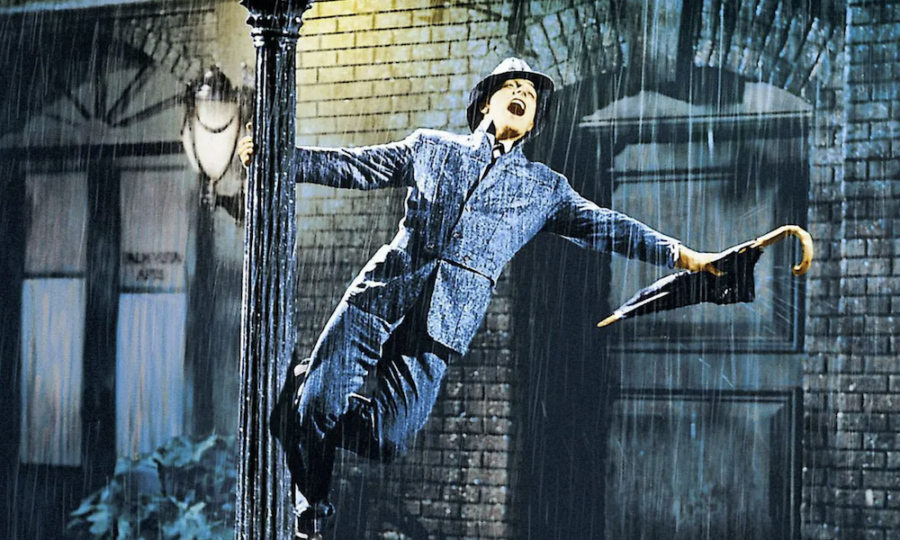
The lighthearted and comedic musical classic Singin’ in the Rain follows three movie stars as Hollywood transitions from the silent film era to the historical introduction of talkie films.
The movie is most recognized for Gene Kelly’s iconic song and dance performance in the film’s titular scene, where Kelly, as the main protagonist, Don Lockwood, is over the moon after walking his girlfriend Kathy Selden (Debbie Reynolds) home. So happy he could sing, he actually does, despite the pouring rain drenching his hat and shoes.
Gene Kelly was an exemplary actor who was center stage for many classic dance scenes, including “I Got Rhythm” from An American In Paris and “I Like Myself” from It’s Always Fair Weather, but his famous dance number from Singing in the Rain tops the charts as his most iconic. Even though the choreography in the piece was juvenile compared to Kelly’s talent, the dance number has captured audiences’ hearts for three-quarters of a century.
To perform the scene, Kelly later described how he had to tap into his inner child. Everyone is always told not to jump in puddles as children, but at this moment, Don Lockwood is so happy that not only does he jump in the rain puddles, he splashes, kicks, and tap dances in the water.
It’s a moment of joy that audiences at home can feel through their television screens, and one of the main reasons Singin’ in the Rain has remained one of the best classic movies all of these years.

Reviewer
6. Vertigo
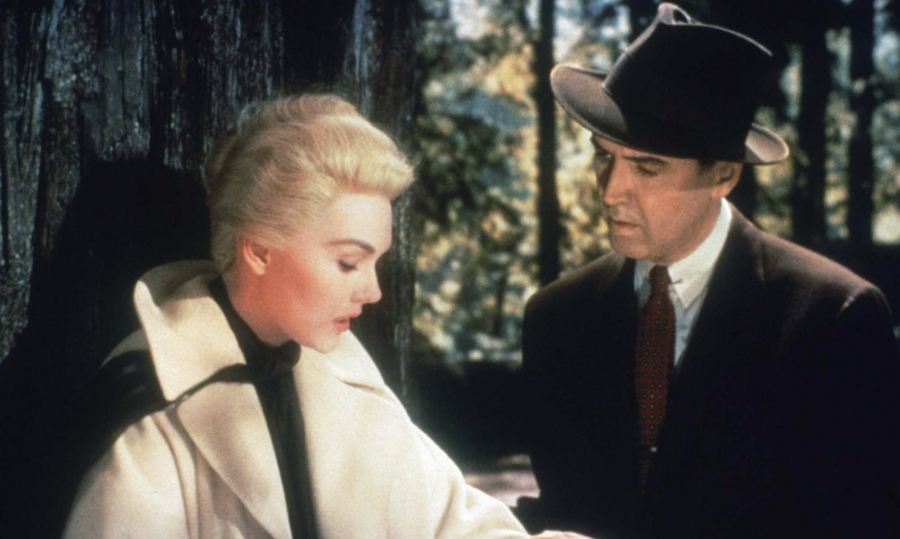
Alfred Hitchcock was known as the Master of Suspense, and movies like Vertigo helped with that moniker. The film, released in 1958, came towards the latter portion of Hitchcock’s career, but it left an indelible mark.
Vertigo was the fourth and final time that Hitchcock would work with leading man Jimmy Stewart, the pair having teamed up previously on Rope (1948), Rear Window (1954), and The Man Who Knew Too Little (1956).
In Vertigo, Stewart played San Francisco detective Scottie Ferguson, a man who ends up retiring from the force because of his fear of heights and vertigo. When he is approached by an old college buddy to follow his wife, who has been acting strangely, Scottie finds out that not all is what it appears to be. It is great Hitchcock theater.
The film also stars another Hitchcock stalwart, Kim Novak, along with Tom Helmore, Barbara Bel Geddes, and Henry Jones.
When Vertigo was initially released, it was met with mixed reviews, but that has changed over time. It is easily considered to be a Hitchcock classic, with many calling it one of his defining works.
Hitchcock made a career out of making psychological thrillers, most of which were home runs. As for Vertigo, it was selected in 1989 by the Library of Congress as one of the first 25 films for preservation in the National Film Registry. The movie is so well respected that in 2007 it was named the ninth-greatest movie ever by the American Film Institute, and in 2012, it replaced Citizen Kane in The Sight & Sound Greatest Films of All Time poll as the greatest film ever made.

Reviewer
7. Double Indemnity
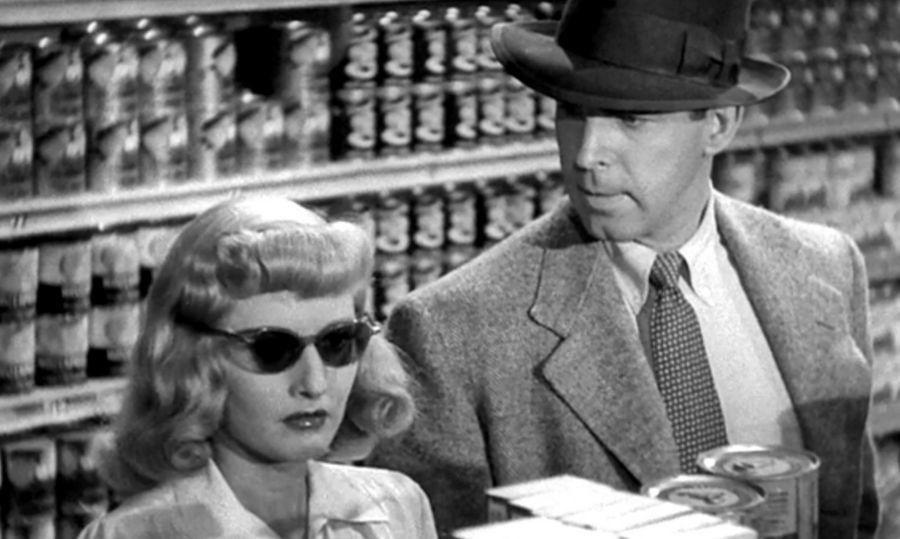
The first of Billy Wilder’s directorial efforts to hit this list is Double Indemnity, starring Fred MacMurray, Barbara Stanwyck, Edward G. Robinson, and Porter Hall. The film’s title refers to the provision in insurance law that pays a claimant double the amount of an insurance policy if the death of a person is the result of an accident.
Fittingly, Double Indemnity focuses on an insurance representative from Los Angeles who schemes with a seductive housewife to commit the murder of her husband and claim the insurance payment. However, their plan raises alarm bells for the firm’s fraud investigator, who takes it upon himself to examine the claim.
Double Indemnity is famous for Wilder and co-writer Raymond Chandler’s screenplay, as well as Barbara Stanwyck’s portrayal of housewife Phyllis Dietrichson. Stanwyck’s work on the film earned the actor an Academy Award nomination, and the character is considered the definitive example of a femme fatale in American cinema. Phyllis Dietrichson is listed on the American Film Institute’s list of 100 Heroes and Villains, ranked as number eight.
While Double Indemnity was nominated for Best Picture of 1944, it lost the top honor to Going My Way. However, the film has held up almost 80 years later, as it is one of the first to establish the film noir genre that continues to be popular today.

Reviewer
8. Some Like it Hot
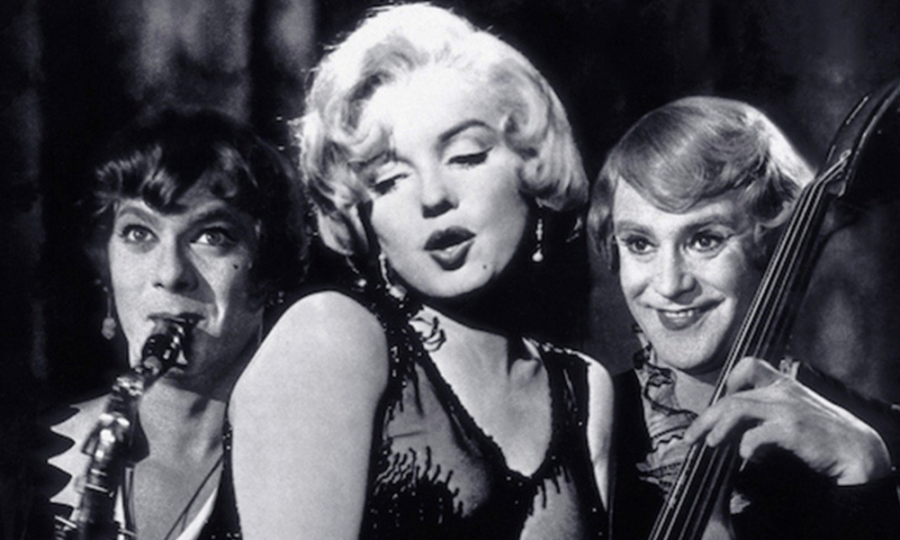
With names like Marilyn Monroe, Jack Lemmon, and Tony Curtis, it is hard to go wrong, especially when they have been given a fun script and direction by one of Hollywood’s greatest directors, Billy Wilder.
Some Like It Hot is a 1959 classic film that finds our two leads, Lemmon and Curtis (who would team up one more time for another classic film, 1965’s The Great Race), seeing something they shouldn’t have and the only way for them to get out of their predicament alive is to dress as women in order to escape.
The film is set in 1929 Prohibition-era Chicago, where Joe (Curtis), a saxophone player, and Jerry (Lemmon), a double bass player, find themselves working at a speakeasy owned by mobster Spats Columbo (George Raft).
When police raid the speakeasy, Joe and Jerry are able to get away, but during their escape, they witness Spats and his crew gun down those who tipped off the police. In order for Joe and Jerry to survive, they turn themselves into Josephine and Daphne and join the all-female band Sweet Sue and her Society Syncopators, where they meet up with Sugar (Monroe).
Love and lust are in the air as Josephine and Daphne must convince the all-girls band that they are “all” girl, while Daphne has her hands full with millionaire Osgood Fielding III (Joe E. Brown).
Despite Marilyn Monroe’s well-documented issues during filming, this film’s combination of great actors, a wonderfully fun script, deft direction, and a catchy musical score to go along with a few nice musical numbers made Some Like It Hot an immediate success that has since put it in the pantheon of the greatest films of all time.
The film holds a 94 percent critical rating on Rotten Tomatoes, while Metacritic has the film averaged out at 98 out of 100. In 2000, the film was voted the top comedy of all time by the American Film Institute in their AFI’s 100 Years…100 Laughs poll. Some Like It Hot has stood the test of time and rightfully so deserves to be considered one of the top classic movies of all time.

Reviewer
9. 12 Angry Men
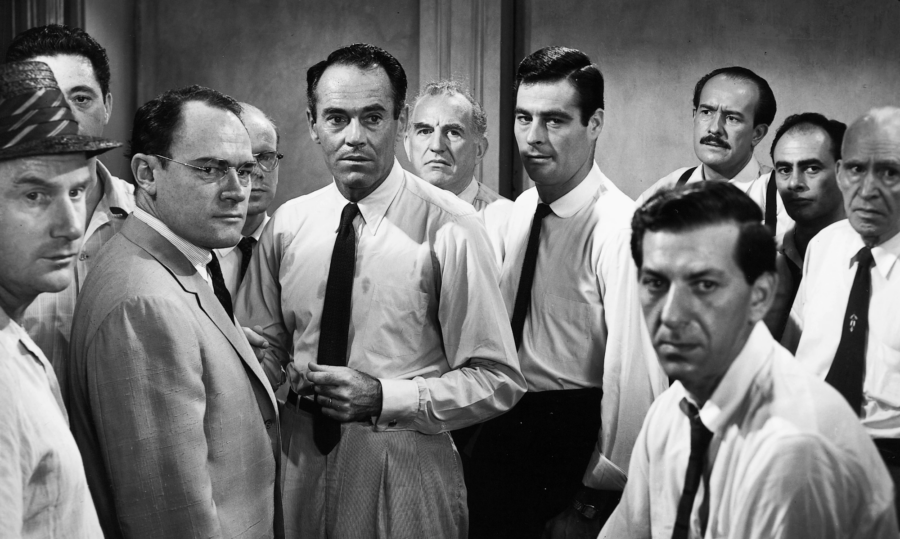
Watching 12 Angry Men is like taking a class in master filmmaking. The 1957 film was helmed by Sidney Lumet in his directorial debut and starred Hollywood screen legends such as Henry Fonda, Lee J. Cobb, E.G. Marshall, Jack Klugman, Ed Begley, and Jack Warden.
The courtroom drama focuses on the 12-man jury, who are tasked to deliberate, then come to a decision to convict or acquit a teenager charged with the murder of his father.
The beauty of 12 Angry Men is watching the men of the jury as they interact. The different personalities find themselves locked in a room piecing together what at first looks like a slam-dunk murder conviction. As time goes on, though, the case finds its gray areas, and what seemed to be a sure thing is no longer.
As the film is often regarded as one of the best films ever made, it sits right behind To Kill a Mockingbird in the American Film Institute’s Top 10 courtroom drama list. The tense drama has a 100 percent rating on Rotten Tomatoes and had Los Angeles Times film critic, Phillip K. Scheuer, calling it a “tour de force in movie making.” Henry Fonda’s portrayal of Juror 8 put him on AFI’s watchlist as one of the 50 greatest movie heroes of the 20th Century.

Reviewer
10. The Third Man
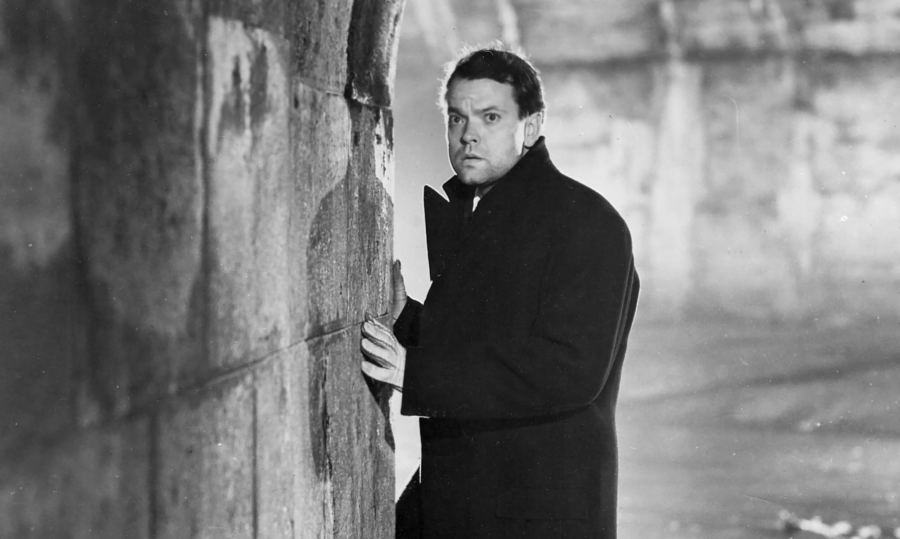
One of the quintessential film noirs of the 20th century, The Third Man was once dubbed the greatest British movie of all time by the British Film Institute. The film is known for its shadowy black-and-white cinematography and zither theme music by Anton Karas.
The Third Man stars Joseph Cotten as Holly Martins, a man who moves to Vienna for a job but discovers his friend Harry has died there. The events leading up to Harry’s death are suspicious at best, and Martins takes it upon himself to investigate the matter.
Costarring Alida Valli, Trevor Howard, and Orson Welles in one of the best reveals in film history, The Third Man is directed by Carol Reed of Oliver! fame. The film became a success at the box office and has endured as an instant classic.
It has influenced countless other movies for its ability to defy conventions by showcasing post-war Europe on screen, the stunning expressionist-style visuals on location, and its use of music to reflect the irony of the story from within.
The Third Man’s legacy lives on to this day by inspiring filmmakers like Christopher Nolan and the Coen brothers.

Reviewer
Classic Movies: Best Of The Rest
11. Seven Samurai
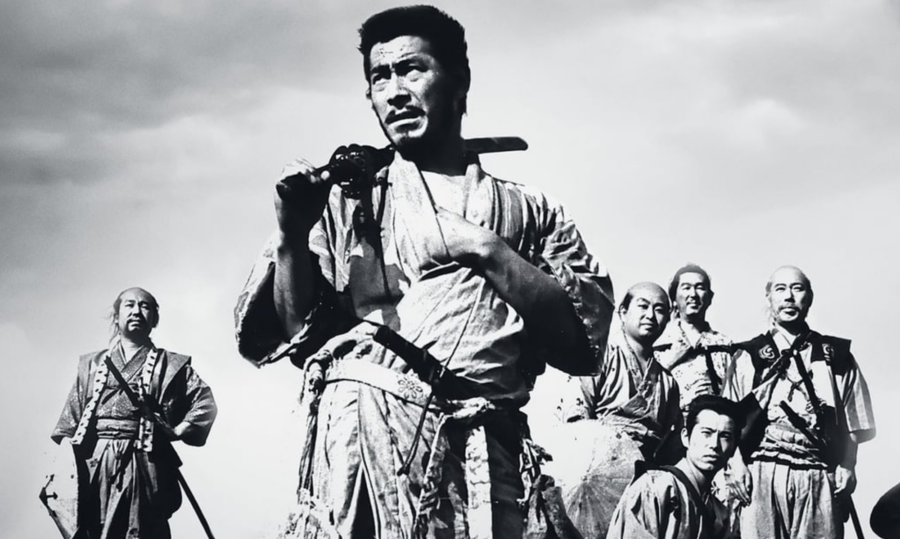
Akira Kurosawa. The name alone evokes the greatest in filmmaking history. During his nearly 60-year career, Kurosawa hit Hollywood with scores of legendary films, one of the biggest being Seven Samurai.
The story, which Kurosawa also helped write, is set in 1586 and follows a small Japanese village of farmers who are looking for ways to protect themselves from a group of bandits planning to make a return to steal all of their food. The villagers decide to go into town to hire samurai to help protect them.
If the storyline sounds familiar, it should. Seven Samurai was the blueprint for the 1960 western, The Magnificent Seven, and a number of other films and television series. But what has made Seven Samurai a classic is how Kurosawa paints his masterpiece. Granted creative freedom by Toho Studios, Kurosawa made prolific use of the telephoto lens, a rarity in 1954 Japan. He also made great use of multiple cameras, which put the audience smack dab in the middle of all the action.
Another aspect of Seven Samurai that helped build the Kurosawa legacy was the fact that he chose to edit the film late at night, after a long day of filming. While he called it a necessity, most directors thought him mad for this new practice. It eventually cemented his standing as one of the greatest directors of all time.
Although the film was a mixed bag for western audiences, Seven Samurai now boasts a 100 percent Rotten Tomatoes score along with the title of Kurosawa’s masterpiece. The site says about Seven Samurai, “Arguably Akira Kurosawa’s masterpiece, The Seven Samurai is an epic adventure classic with an engrossing story, memorable characters, and stunning action sequences that make it one of the most influential films ever made.”

Reviewer
12. Tokyo Story
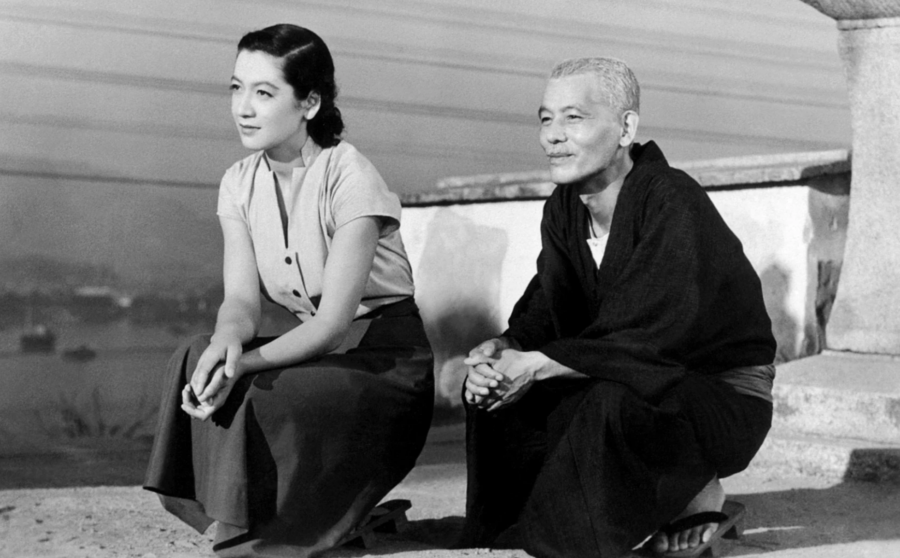
While many of the best classic movies tend to come from American filmmakers, director Yasujirō Ozu’s masterpiece hails from Japan and helped redefine the drama genre.
Starring Chishū Ryū and Chieko Higashiyama as an aging couple visiting their many grown children in Tokyo, Tokyo Story brings emotions to the surface when their family seemingly ignores the elderly couple.
As a post-World War II film, Tokyo Story identifies with its themes of political and societal change while showcasing one family’s struggles with traditional family values being thrown out the window.
Tokyo Story is a slow-moving film that seeks to give an understanding of Westernization and the breakup of the family unit. Ozu uses strikingly different camera angles than other filmmakers of the time, with a style that reflects low angles that almost never move.
While other movies with similar storylines have depended on melodrama to propel the plot forward, Tokyo Story relies heavily on building inner emotional struggles that give the audience a sense of knowledge rather than manipulating sentiment.

Reviewer
13. The Maltese Falcon
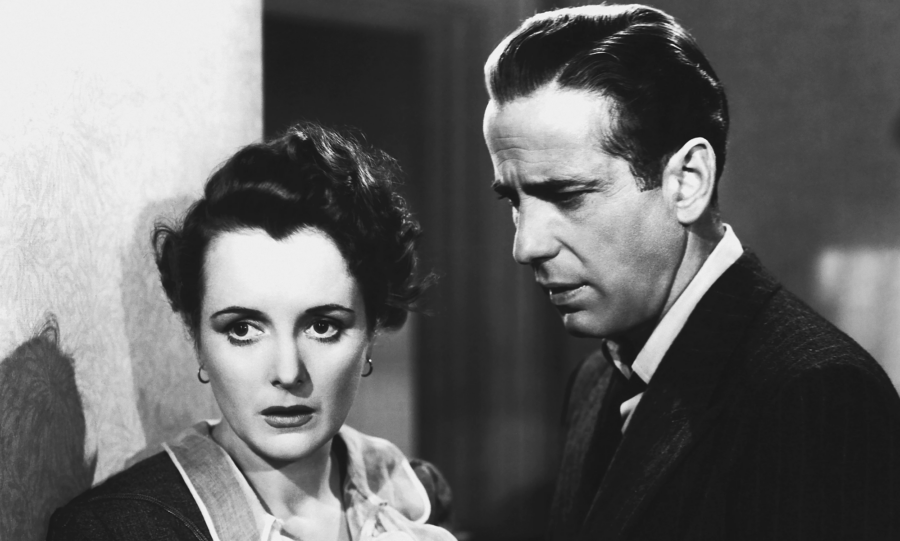
Believe it or not, the 1941 Humphrey Bogart classic, The Maltese Falcon, is actually a remake of the 1931 film of the same name. The difference here, though, is that Bogart’s film, which introduces him to the world as private detective, Sam Spade, was written by Hollywood legend, John Huston, making his directorial debut.
By the time The Maltese Falcon made it to the movie theaters, Bogart was well into his legendary career, having already starred in over 40 films which included High Sierra, The Roaring Twenties, and Angels with Dirty Faces.
While The Maltese Falcon owes much to both Huston and Bogart, the film also starred Hollywood heavyweights such as Peter Lorre, Gladys George, Sydney Greenstreet, and Academy Award-winning actress Mary Astor. The story follows a San Francisco private eye, Sam Spade, as he deals with three unsavory individuals who are all after the famed Maltese Falcon.
The film, which was also based on the 1930 Dashiell Hammett novel of the same name, was an immediate critical hit. The film ended up being nominated for three Academy Awards – Best Picture, Best Supporting Actor (Sydney Greenstreet), and Best Adapted Screenplay (John Huston).
Cementing its legacy as one of the greatest films of all time, The Maltese Falcon holds the honor of being one of the first 25 films the Library of Congress selected into the National Film Registry for being “culturally, historically, or aesthetically significant.”
While Bogart would go on to star in numerous other wonderful roles – Casablanca (1942), To Have and Have Not (1944), The Big Sleep (1946), and Sabrina (1954) – his role as Sam Spade in The Maltese Falcon is often considered his crowning achievement.

Reviewer
14. Gone with the Wind
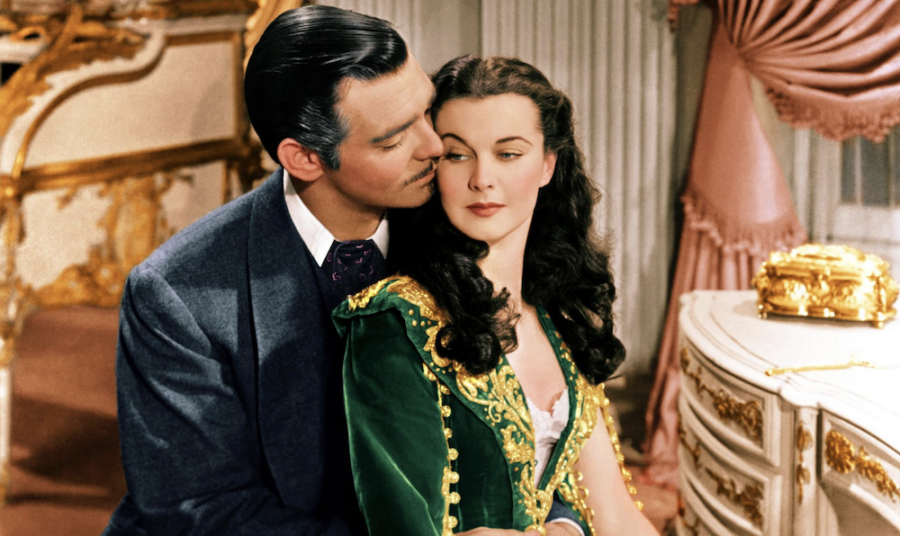
In 1998, The American Film Institute listed Gone With the Wind as one of the greatest movies of all time. Sure, that was 25 years ago, but this Civil War epic featuring the iconic Scarlett O’Hara is still considered one of the best classic movies ever made.
Though Gone With the Wind is a film of epic proportion (it’s one of the longest movies ever created) and follows a heart-wrenching story of love and war, one of the main reasons for Gone With the Wind’s survival against the times is in a large part due to the protagonist, Miss Scarlett O’Hara herself.
Scarlett embodies a universal truth that any movie watcher can understand. She is a symbol of self-reliance—a courageous, resourceful, and unbeaten woman who has faced the worst that life can give her, and she still holds tight to the desire to achieve her goals.
In a time when the majority of films featured helpless female protagonists who needed a man to save them, Scarlett O’Hara was a strong symbol of feminism that has continued to inspire audiences to this day.

Reviewer
15. Lawrence of Arabia
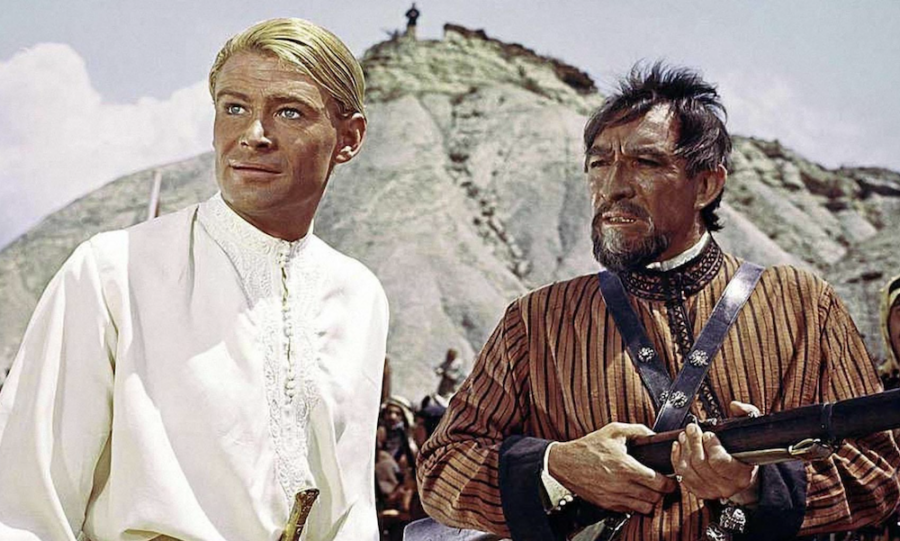
Lawrence of Arabia is a classic title that is widely thought of as one of the greatest films ever made. The 1962 epic, with a 210-minute running time, is based on the true-life story of T.E. Lawrence and the book, Seven Pillars of Wisdom: A Triumph, which Lawrence wrote in 1926.
The movie stars Peter O’Toole as Lawrence, along with legends Sir Alec Guinness (Star Wars), Anthony Quinn, Claude Rains, Omar Sharif, Anthony Quayle, and George Kennedy.
The story follows Lawrence’s military career during the First World War while serving in the Ottoman provinces of Greater Syria and Hejaz. The film focused on Lawrence’s struggles with the violence of war, who he was as a person, and the allegiances he had that were split between Britain and the Arabian desert tribes.
Because of the brilliance of the film, which was directed by David Lean, it was nominated for 10 Oscars, winning seven in total. These included Best Picture and Best Director. O’Toole was nominated for Best Actor, as was Sharif for Best Supporting Actor.
In 1991, the U.S. Library of Congress deemed Lawrence of Arabia as “culturally, historically, or aesthetically significant,” selecting it to be preserved in the National Film Registry.

Reviewer
16. Wizard of Oz
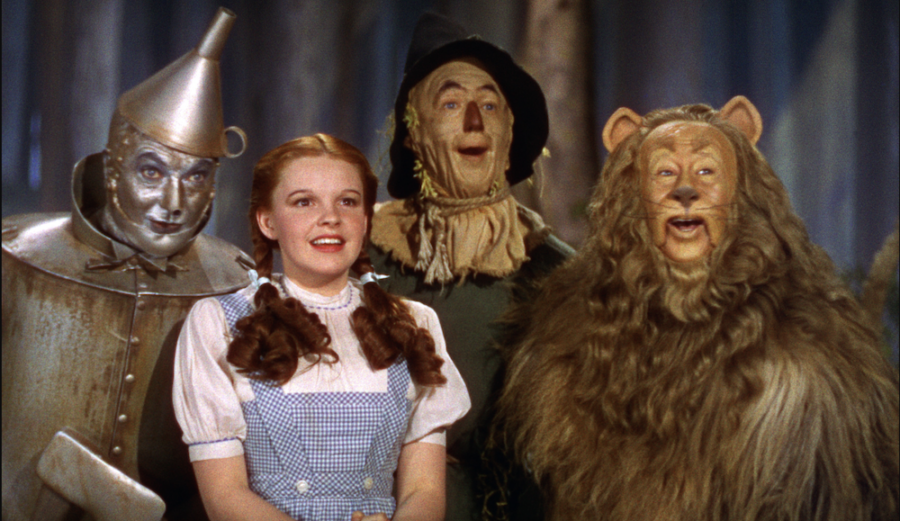
Not all classic films are big successes when they are first released. In fact, The Wizard of Oz lost MGM Studios a lot of money and was deemed a failure for nearly 10 years after its box office premiere. Fast forward to the modern day, and The Wizard of Oz is now considered one of the most influential films of all time. So, what happened between 1939 and the modern era?
The Wizard of Oz was a high-budget production with a grand cast of actors and amazingly decorated sound stages that brought the Land of Oz to life in a way that had not been done in previous adaptations. However, its high-budget cost meant that even though it was moderately popular upon its release, it failed to make any profit for the studio until its re-release 10 years later.
It took something that many Hollywood professionals thought was going to kill the industry to make The Wizard of Oz break even and eventually become one of the best classic movies ever. It took television.
Risking almost nothing on their failed fantasy, MGM aired The Wizard of Oz on CBS, and a brand new audience fell in love with the feature. It became so popular that the movie became an annual tradition that families would gather around to watch when it came on TV.
The movie’s themes of escapism, adventure, friendship, and good versus evil were something that caught children’s attention and filled parents with the feeling of nostalgia – an effect the film still has on audiences today.

Reviewer
17. It’s a Wonderful Life
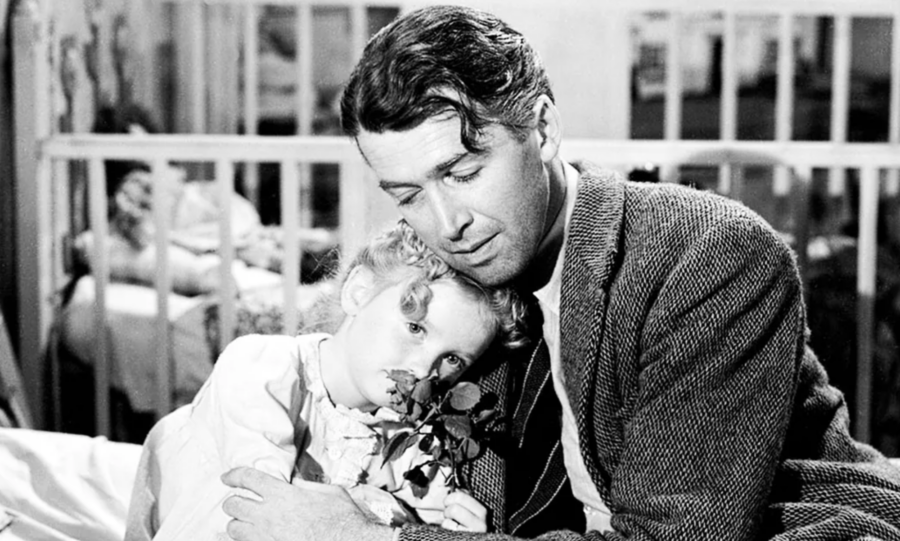
Every person who has ever lived has fallen victim to the “grass is greener” mentality. It’s human nature to look at our lives through a close lens, nitpicking all the details that we wish were different and ignoring the little moments that make life great.
That’s why It’s a Wonderful Life has remained one of the best classic movies all of these years. While it took an angel descending from the heavens to teach Goerge that his life was worth living, watching the film is all it takes to remind audiences that they, too, have a good thing going.
Like many classics, It’s a Wonderful Life wasn’t fully appreciated at the time of its release. In fact, the film starring James Stewart, Donna Reed, Lionel Barrymore, and Henry Travers was a theatrical flop. It wasn’t until It’s a Wonderful Life hit the public domain 30 years later, in 1976, and the movie started airing on television that it became an instant Christmas classic.
This charming black-and-white film teaches audiences the lesson that, yes, we need to follow our dreams, but if things don’t pan out the way we planned, there is still always a bright side.

Reviewer
18. It Happened One Night
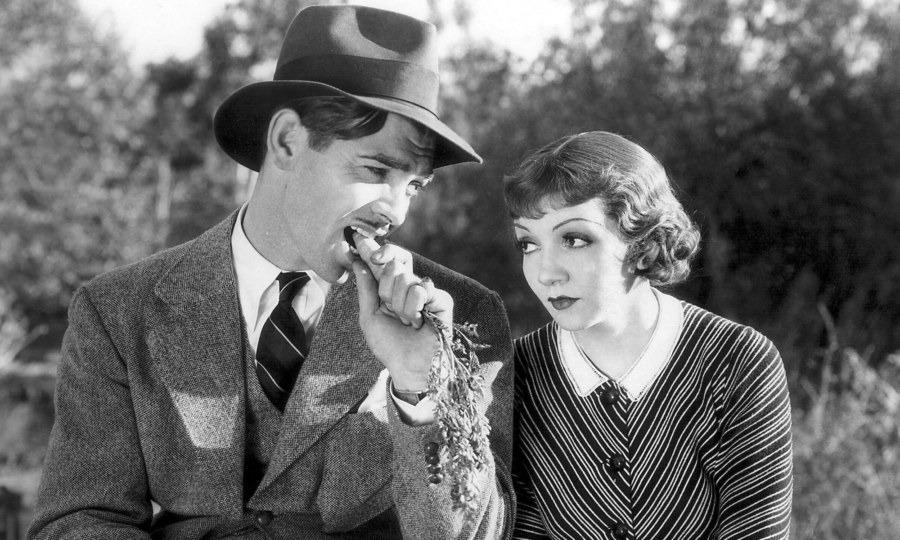
The romance genre in movies certainly didn’t start with 1934’s It Happened One Night, but the film’s use of screwball comedy and bankable Hollywood stars has inspired the industry ever since.
Directed by Frank Capra, the movie stars Claudette Colbert as spoiled socialite Ellie Andrews who falls in love with Peter Warne, a recently fired news reporter portrayed by Clark Gable. The two travel together from Florida to New York by bus but get stranded when the bus leaves them high and dry. It Happened One Night is a road trip comedy, romance epic, and influential film all rolled into one.
It Happened One Night was the first film to win all five top categories at the Academy Awards (Best Picture, Best Director, Best Actor, Best Actress, and Best Adapted Screenplay). This legacy has only been achieved two other times by One Flew Over the Cuckoo’s Nest and Silence of the Lambs.
Due to the two lead characters using the bus as their preferred mode of transportation, Greyhound bus use skyrocketed after the film’s debut. The scene in which Claudette Colbert hikes up her skirt to reveal her leg while stranded on the side of the road, hoping to hitchhike, has inspired multiple parodies in the decades since the film’s release.

Reviewer
19. The Godfather
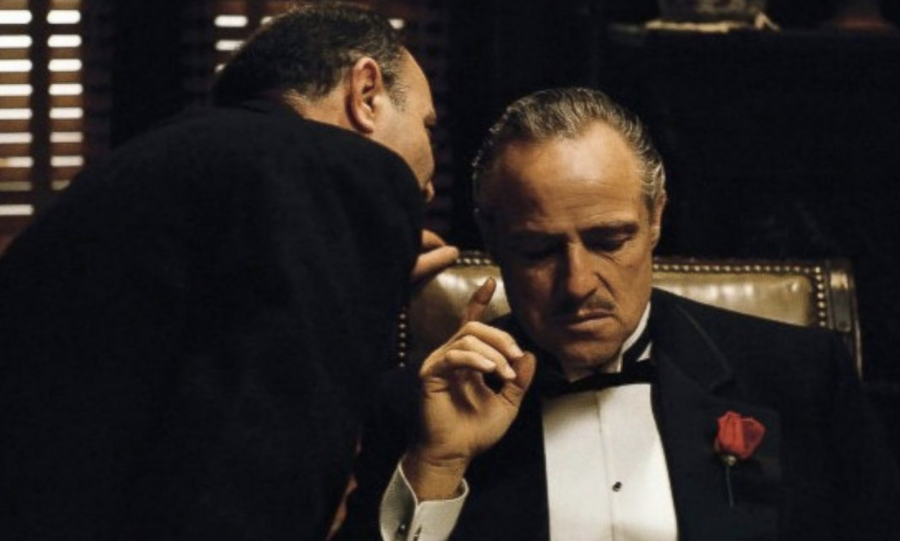
If anyone has had the pleasure of watching Paramount+’s series, The Offer, about the making of the classic film, The Godfather, they can appreciate just how difficult a task it was in bringing together one of the most unlikely combinations of cast, screenwriters, and director. But it eventually produced what has many times been described as the quintessential film about family, and is often considered to be the best film ever made.
The classic began as a 1969 Mario Puzo novel, one for which he helped write the screenplay with the film’s director, Francis Ford Coppola. Both Coppola and Puzo had to go to bat several times in order to get the cast they so desired, which included Marlon Brando (who nobody wanted), Al Pacino (someone else nobody wanted), James Caan, Robert Duvall, John Cazale, Talia Shire, Diane Keaton, and a certain horses head.
The film was set in 1945 in New York and saw the fall of one Don and the rise of another in all its gratuitous violence and drama. The Godfather hit movie theaters in 1972 and quickly established itself as a box office giant.
The film was so well regarded that it was nominated for 11 Academy Awards. These included Best Picture, Best Actor for Marlon Brando (which he famously turned down), Best Adapted Screenplay, and Best Supporting Actor for Al Pacino, James Caan, and Robert Duvall. It won Best Picture, Best Actor, and Best Adapted Screenplay.

Reviewer
20. Sunset Blvd.
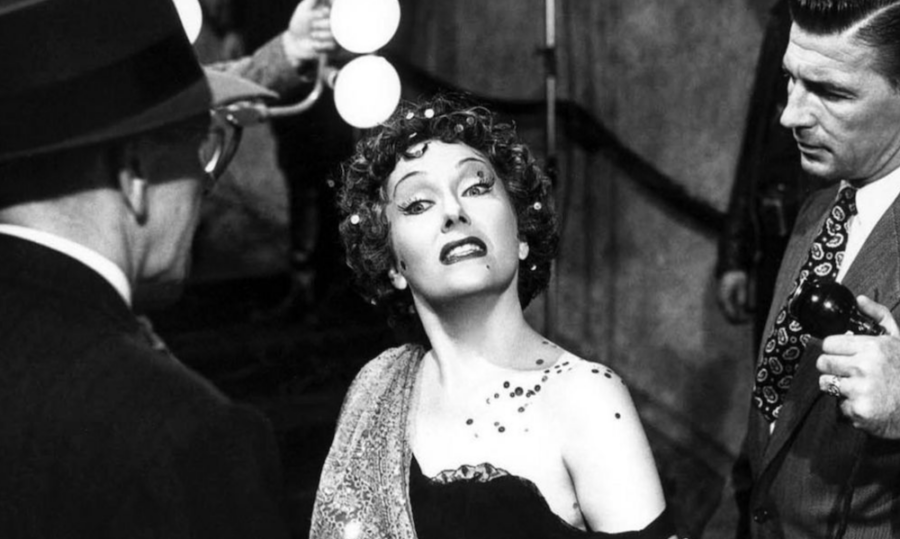
Sunset Blvd. is the story of a silent era golden star actress who has been rejected by Hollywood as she aged and motion pictures changed into talking films. Gloria Swanson plays Norma Desmond, the aging actress, and William Holden plays a young screenwriter who meets the jilted actress and believes he can use her to better his career.
Sunset Blvd. is a film-noir drama that openly criticizes the way that movies were made in the early 1950s and displays a dark and cynical tone that writer and director Billy Wilder sampled from what he believed to be the tone of reality.
Sunset Blvd. was one of the most successful films released in 1950, making $5 million at the box office with a $1.75 million budget. With a fantastic script brought to life by mesmerizing acting, Wilder showcased the real side of Hollywood, warts and all.
The year of its release, the film was nominated for 11 Oscars and won three. It has also since been registered with the Library of Congress’s National Film Registry and is often taught in film classes due to the excellence of the acting, cinematography, and script.

Reviewer
21. Rear Window
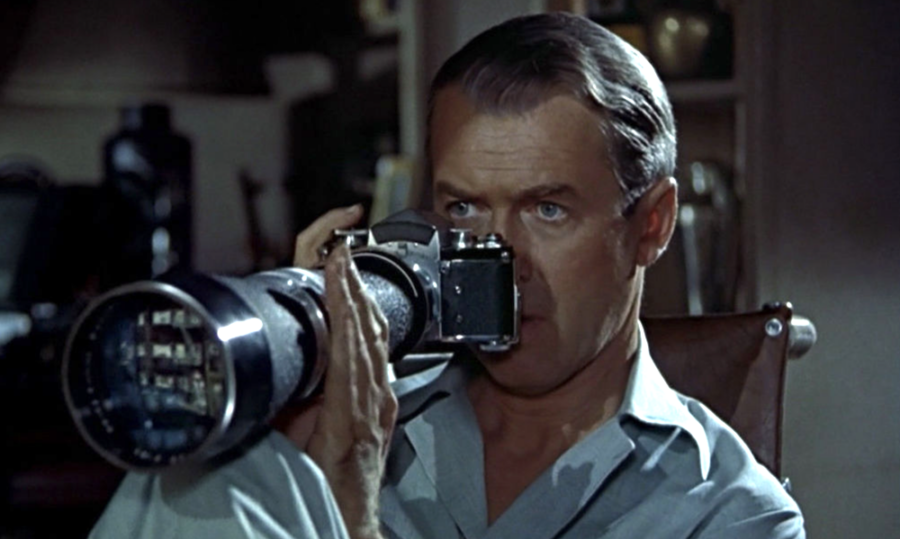
Alfred Hitchcock is the Master of Suspense, so it is no wonder that this genre-defining, groundbreaking director has more than one film on this Best Classic Movies list.
Rear Window is the story of a man who is confined to a wheelchair and spends his time spying on the apartment across the street through a telephoto lens and binoculars. This thrilling mystery stars James Stewart, Grace Kelly, and Wendell Corey and is often considered Hitchcock’s best film.
Audiences can relate to the natural human curiosity the film’s protagonist L.B. Jeffries (Stewart) displays. It’s a curiosity brewed out of boredom that is satisfied when Jeffries spies on the lives of his neighbors, similar to how many people dig into the personal lives of others through podcasts, tabloids, and other media today.
Hitchcock takes the natural voyeuristic tendency that humans have and poses the question, what would happen if someone who could only watch witnessed a murder?
Rear Window is a suspenseful mystery kept tight and full of tension and humor without anything extra to disillusion audiences. This masterful mixture of entertainment with the thrilling chill of a murder mystery is what has made this Hitchcock film a classic for so many years.

Reviewer
22. The Treasure of the Sierra Madre
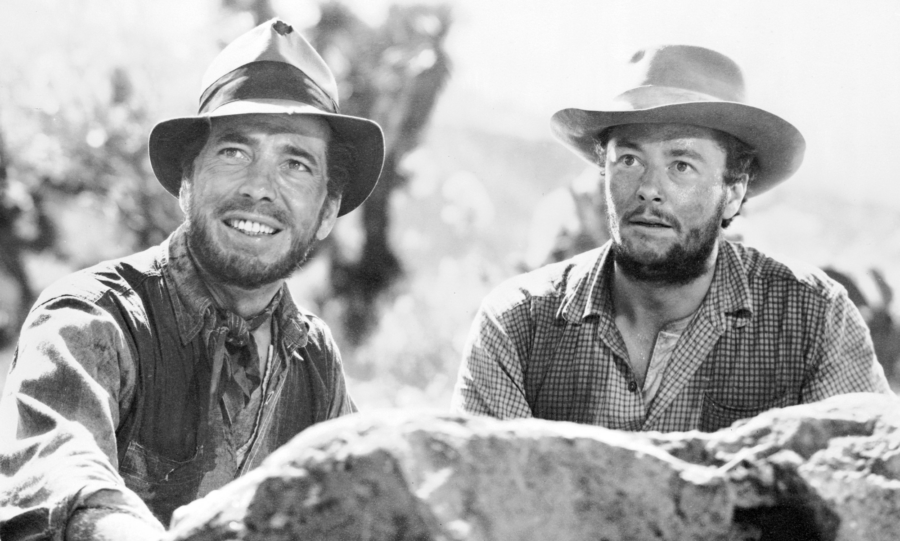
It would not be their first time and certainly would not be their last, but the combination of writer/director John Huston and actor Humphrey Bogart once again was a winner when they teamed up for the 1948 western, The Treasure of the Sierra Madre. As with a number of Bogart films, this one is often times considered to be one of the top classic films ever made.
Along with Bogart, the film stars Tim Holt and John Huston’s father, Walter Huston. The film is based on B. Traven’s 1927 novel of the same name and is set in 1925. It tells the story of two oppressed men (Bogart and Holt) who decide to join forces with an old prospector in their search for gold in Mexico. It is a partnership that is fraught with danger and ultimately death.
There was much controversy come awards time for Humphrey Bogart and his portrayal of Fred C. Dobbs in The Treasure of the Sierra Madre. The film itself received four nominations, winning three – Best Screenplay, Best Director, and Best Supporting Actor – but Bogart was passed on for the Best Actor Award in what has been determined to be the best performance of his career.
This controversy has not stopped the impressive critical reviews, as the film sits at 100 percent on Rotten Tomatoes. Bogart’s amazing performance, as well as Walter Huston’s, combined with John Huston’s deft writing and direction, have firmly placed The Treasure of the Sierra Madre into the top classic films of all time.

Reviewer
23. The Apartment
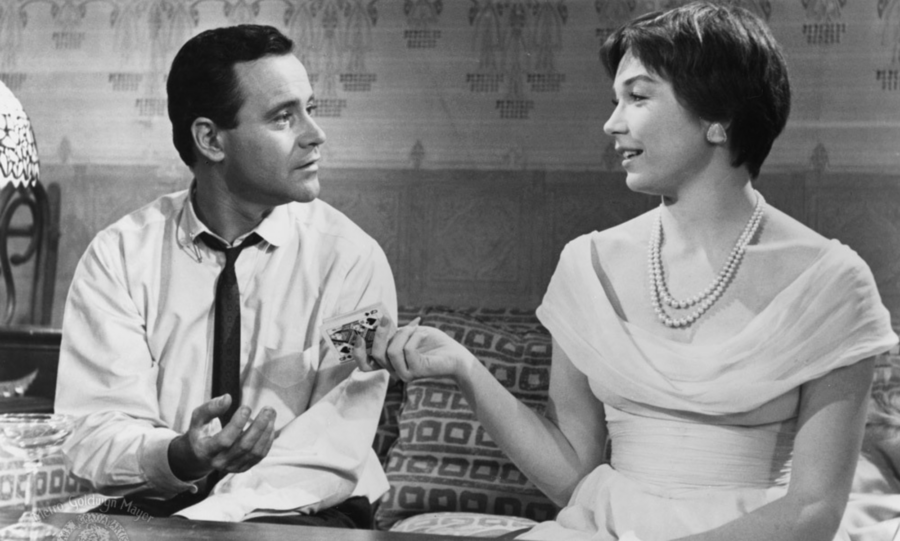
One of the only romantic comedies to be considered among the best classic movies is Billy Wilder’s 1960 film The Apartment. It stars Jack Lemmon and Shirley MacLaine and was honored with the Academy Award for Best Picture. In the years since its release, The Apartment has been listed as one of the greatest films ever made by the American Film Institute and Sight and Sound magazine.
Lemmon plays insurance clerk Bud Baxter, a corporate stooge who allows senior coworkers to utilize his apartment to have extramarital affairs. While hoping to get promoted by getting in the good graces of his fellow employees, Bud meets his building’s elevator operator Fran Kubelik (Shirley MacLaine), and the two establish a romantic connection. However, unbeknownst to Bud, Fran is conducting an affair of her own with Bud’s boss (Fred MacMurray).
The Apartment was one of the last remaining movies to be filmed and released in black-and-white before the trend of color worked its way into most films of the 1960s. It was the previous black-and-white movie to win the Academy Award for Best Picture until Schindler’s List in 1993, followed by The Artist in 2011.
The Apartment has inspired filmmakers like Cameron Crowe and songwriters like Burt Bacharach. Bacharach famously based his musical stage production of Promises, Promises on The Apartment, writing the show alongside Neil Simon and lyricist Hal David.

Reviewer
24. Dr. Strangelove
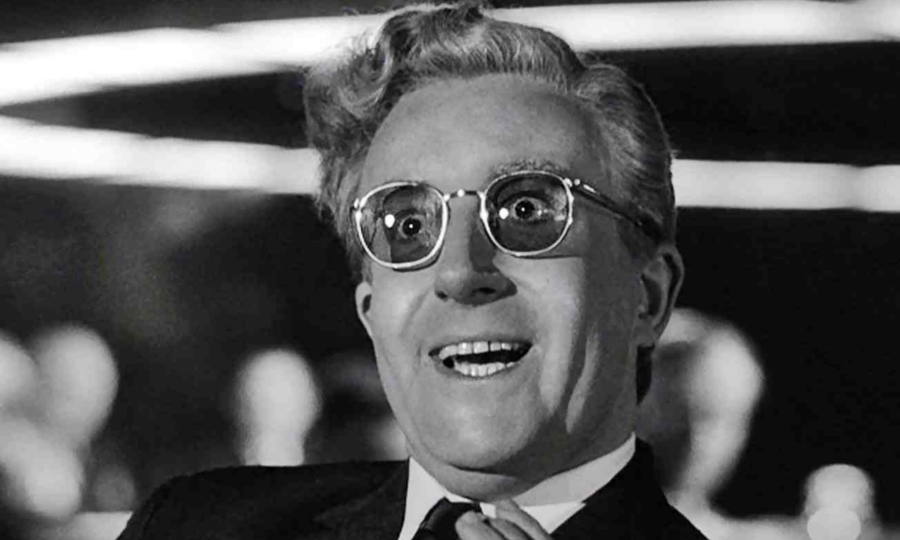
Director Stanley Kubrick hit it out of the park when he introduced global audiences to the satirical black comedy movie Dr. Strangelove. Otherwise known as Dr. Strangelove or: How I Learned to Stop Worrying and Love the Bomb, the Cold War is placed into focus as a potential nuclear war between the United States and the Soviet Union becomes a reality. An ensemble cast carries this political and ironic movie, with the likes of Peter Sellers, George C. Scott, Sterling Hayden, Keenan Wynn, Slim Pickens, and Tracy Reed front and center.
Sellers himself plays a multitude of roles in Dr. Strangelove, including the titular character, a wheelchair-bound former Nazi with alien hand syndrome and nuclear war expertise.
Originally supposed to be released towards the end of 1963 with a line that references the city of Dallas, Dr. Strangelove encountered delays in premiering due to President John F. Kennedy’s assassination in Dallas, Texas, in November 1963. The line was changed to reference Las Vegas instead, and Columbia Pictures moved the premiere date to January 1964.
Considered among the best comedies of all time by the American Film Institute, Dr. Strangelove is a black-and-white movie that proves as unhinged today as when it was released theatrically in 1964. Caught in a moment of time during great upheaval in foreign policy, the themes presented in the film still ring true to the current political climate.
As a result, the National Film Registry has selected Dr. Strangelove for preservation due to its cultural and historical significance.

Reviewer
25. On the Waterfront
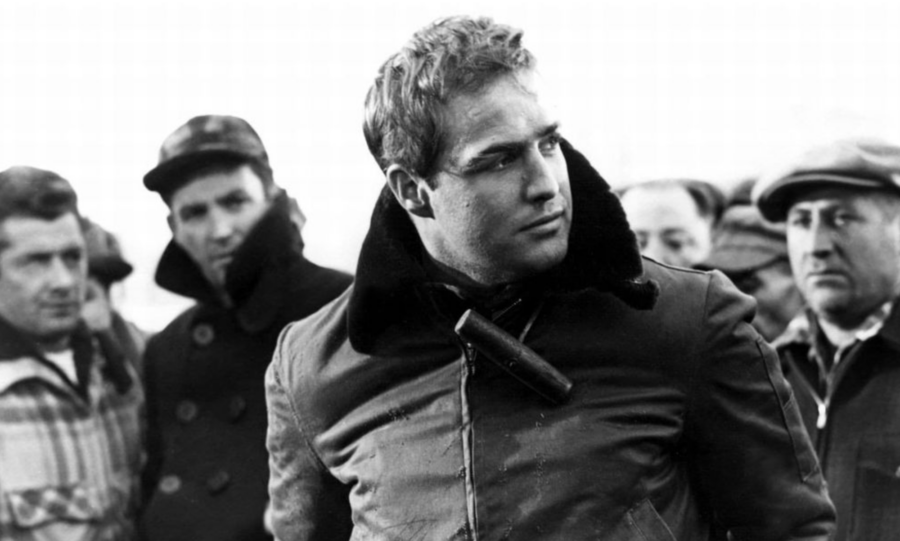
As far as crime dramas go, nothing compares to 1954’s On the Waterfront, directed by legendary filmmaker Elia Kazan. Depicting the corruption and violence plaguing longshoremen on the waterfronts in Hoboken, New Jersey, the movie was ranked in 1997 by the American Film Institute as one of the top 10 greatest movies of all time. The movie was a financial success and went on to win Best Picture at the Academy Awards, as well as earning actor Marlon Brando his first Oscar.
Brando stars in One the Waterfront as former prize fighter Terry Malloy as he gets embroiled in the corruption of the dockworkers union. Tormented by his older brother (Rod Steiger), who has become a corrupt union boss, Terry struggles with his familial and community ties. He establishes a connection with the sister (Eva Marie Saint) of one of the cartel’s victims. The heart of the film comes from Terry navigating these relationships as he contends with forces greater than him.
On the Waterfront has a political subtext to it that has been written about for years by film historians. Director Elia Kazan was famous for naming names of people he believed were Communists working in the film industry. This film is his answer to the critics who considered Kazan’s actions reprehensible to his peers.
Marlon Brando’s speech towards the end of the film is marked by the often quoted lines, “I coulda had class. I coulda been a contender. I coulda been somebody, instead of a bum, which is what I am,” strengthening a stellar performance that has been studied in acting classes for decades.

Reviewer
26. Grapes of Wrath
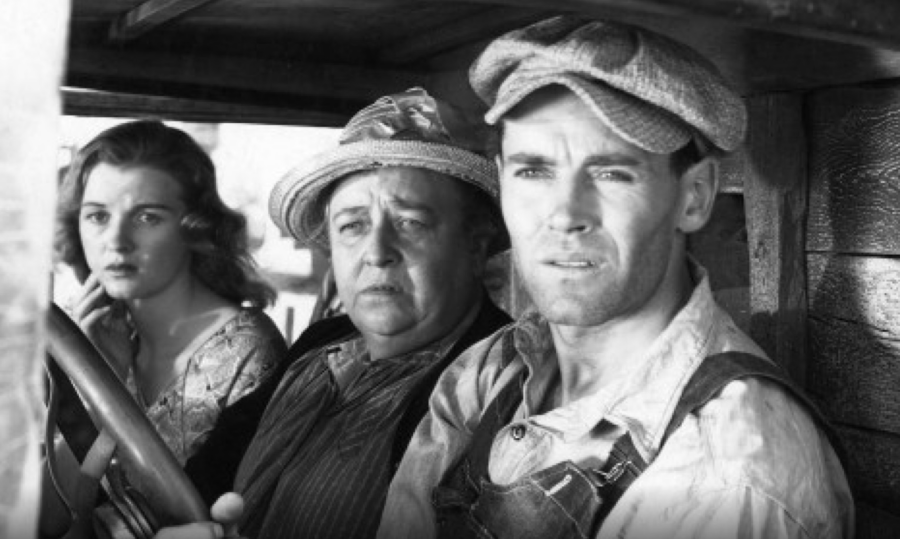
Creating a film based on a classic American novel is a good starting point for making a classic movie, but it’s not always a surefire thing. The movie has to be just as good as the novel, if not better, for audiences to accept the adaptation and welcome it as a classic film.
Luckily for both John Steinbeck, the author of the book, and director John Ford, The Grapes of Wrath was such a great adaptation of the popular novel that Steinbeck said it was as though his words had been cast on the screen.
The Grapes of Wrath quickly became one of the best classic movies of all time. It displays the harshness of the Great Depression through a lens so realistic it could have been a documentary about the Oklahoma family it follows.
Filmed in 1940, only a year after the Great Depression ended and the original novel was published, it was a great risk for Ford to make a movie that so honestly expressed the abysmal truth that many American families faced during the Dust Bowl.
And though the film, like the book, caused controversy and anger among those who disagreed with the political and socialist themes, The Grapes of Wrath went on to be a box office success and win two Academy Awards, as well as secure a place in history as one of the greatest American films of all time.

Reviewer
27. North by Northwest
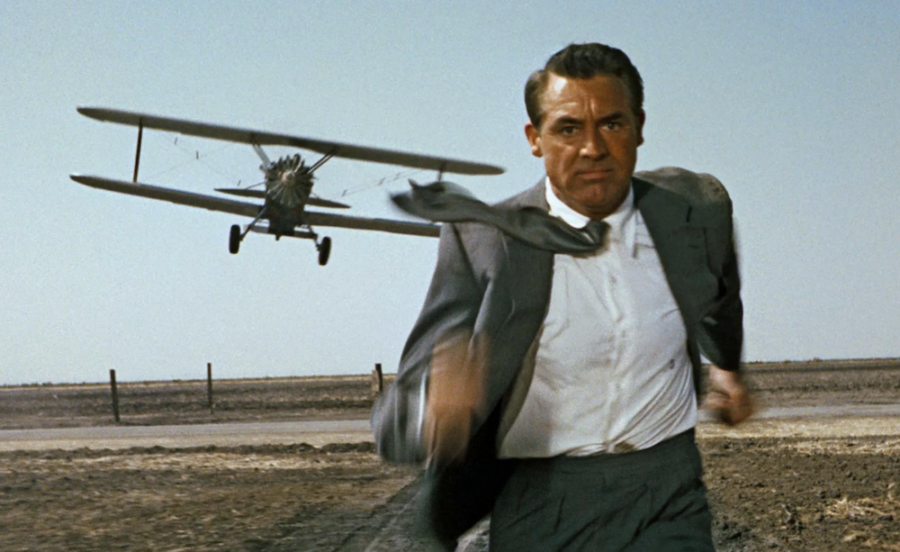
Although Alfred Hitchcock’s 1959 spy thriller North by Northwest is a case of mistaken identity, there is no mistaking the fact that this film is oftentimes listed as one of the greatest films ever made.
Hitchcock, and many of his films, seem to have that lasting effect. North by Northwest would mark the fourth and final time Hitchcock would work with one of his favorite male actors, Cary Grant, as they had previously teamed up for Suspicion (1941), Notorious (1946), and To Catch a Thief (1955).
Along with Grant, North by Northwest also stars Eva Marie Saint, James Mason, and Martin Landau. The story follows Roger Thornhill, who immediately ends up being in the wrong place at the wrong time when he is mistaken by thugs to be someone he isn’t. It turns an innocent gesture into a chase across the country where Thornhill not only has to avoid the relentless Phillip Vandamm (Mason) and his goons, but also has to try to figure out what part Eve Kendall (Marie Saint) plays in all of it.
North by Northwest is well known for a number of iconic, thrilling scenes (the chase by the crop duster, Mount Rushmore) that has given it a 97 percent Rotten Tomatoes score. The film has been called “gripping, suspenseful, and visually iconic,” terms that have made this Hitchcock film often thought of as one of the best classics of all time.

Reviewer
28. The Adventures of Robin Hood
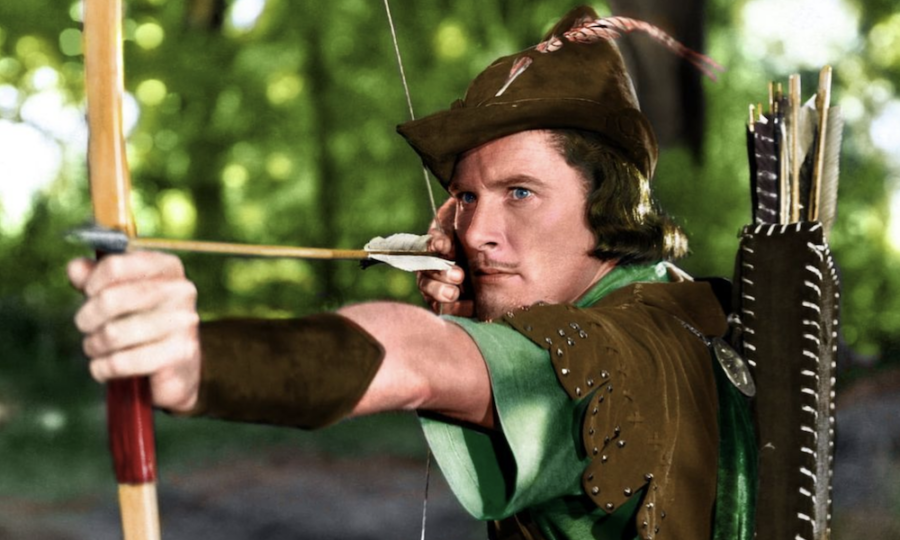
If you like your classic films with a heavy dose of swashbuckling fun, then 1938’s The Adventures of Robin Hood is your kind of flick. The fun and adventure are on full display, added to it by some romance between stars Errol Flynn and Olivia de Havilland, playing Robin of Locksley and Maid Marian to the hilt. Joining Flynn and de Havilland are Basil Rathbone (who always played a great villain, as well as an even better Sherlock Holmes), Claude Rains, and Alan Hale, Sr.
The story is immediately familiar, especially for those who have followed the exploits of Robin Hood and his Merry Men. Robin of Locksley defies Prince John, telling him that taking King Richard’s spot while the King is off fighting during the Third Crusade is treason. Robin makes an enemy of Prince John, and the battle for Sherwood Forest begins.
The film was made for $2 million in 1938, and at the time, it was the most expensive film ever made by Warner Bros. The film was very popular, as the average ticket price for a movie in 1938 was less than 25 cents, and the film brought in over $4 million at the box office.
The Adventures of Robin Hood was nominated for four Academy Awards, winning three (Best Art Direction, Best Film Editing, and Best Original Score). Errol Flynn made a career of swashbuckling roles and was regarded as one of the top actors during the Golden Age of Hollywood.
His turn as Robin Hood was named by the American Film Institute as the 18th greatest hero in American cinema history.

Reviewer
29. Metropolis
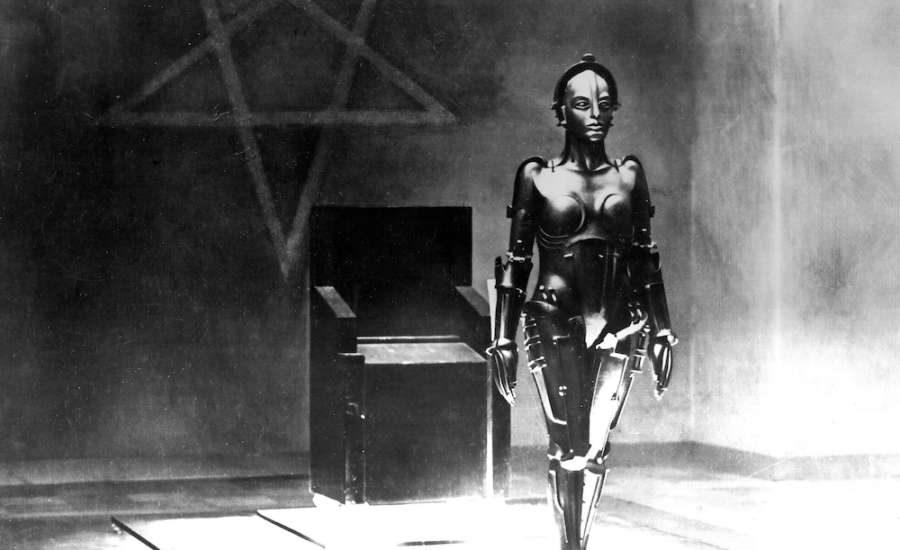
Metropolis was not the first full-length science fiction film, but it is difficult to argue that it is not the most influential. The 1927 German expressionist film is the bedrock of cinematic sci-fi as we know it, with its elements seen in everything from Star Wars to Blade Runner to Minority Report. While Metropolis was met with mixed reviews upon release, it has justly come to be seen as one of the greatest movies of all time.
Metropolis was directed by the legendary Fritz Lang, who would also produce equally enormously significant movies like the early crime procedural film M and the thriller The Testament of Dr. Mabuse.
Adapted from a novel by Thea von Harbou (which itself was written to be produced as a film), the movie tells the story of a worker rebellion in the titular futuristic dystopia, with a man from the privileged upper classes and a woman from the subterranean workers trying to bridge the (literal) distance between the two.
The movie’s central image of the beautiful, inhuman female robot has become perhaps its most iconic element, though the breathtaking visuals and epic storytelling have fascinated and troubled viewers for decades. Metropolis may not have been the first science fiction film, but no other film has retained its futuristic majesty so well.

Reviewer
30. Bride of Frankenstein
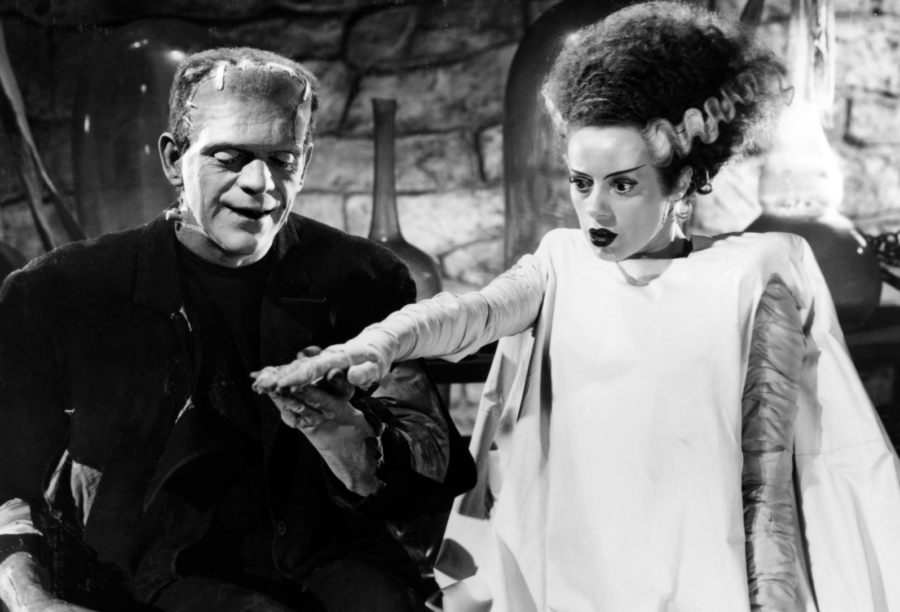
Bride of Frankenstein had the unenviable task of following a movie that impacted the world so heavily that it is still the definitive telling of one of the most famous stories in the world. But the 1935 sequel to Frankenstein somehow managed to pull it off, with critics often making the argument that it actually is better than the original.
Director James Whale, The Monster actor Boris Karloff, and Henry Frankenstein actor Colin Clive all returned for the film, joined by Elsa Lanchester as the titular Bride and Ernest Thesiger as Doctor Septimus Pretorius, the mad doctor’s even madder former mentor.
While Frankenstein was a stripped-down, relatively faithful adaptation of Mary Shelley’s novel, Bride of Frankenstein is a far stranger story. It involves Shelley herself as a character (also played by Lanchester), tiny living homunculi, and the growth of an artificial brain.
The actual plot begins immediately after the events of the first film, in which it is revealed that the Monster had actually survived the fire in which he had been trapped by angry villagers, and builds to an eerie sympathy with Karloff until it climaxes in the most terrifying scream ever committed to film.
There is no reason why a sequel to Frankenstein should have been anything but a quick cash grab. That Bride of Frankenstein is just as powerful as the first film is nothing short of a miracle.

Reviewer
31. A Streetcar Named Desire
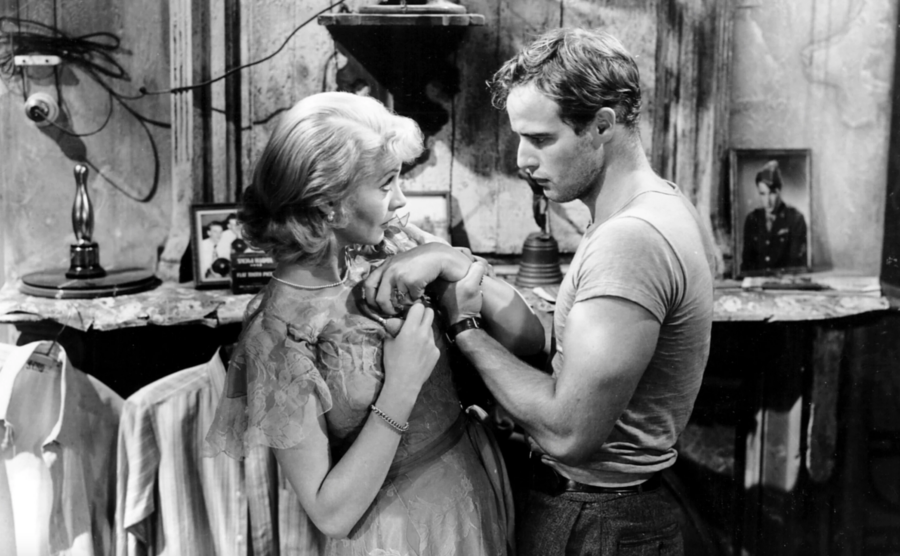
“Stella! Hey, STELLLAAAA!”
There’s not a movie buff around who hasn’t heard (or quoted) that famous line from A Streetcar Named Desire. Even if they don’t know where the line originated, Marlon Brando’s screams up the stairs to his wife as the drunk Stanley has gone down in history as one of the most famous lines ever written.
It was Marlon Brando’s, Kim Hunter’s, and Vivien Leigh’s raw, emotional portrayal of Stanley, Stella, and Blanche’s characters, respectively, that makes the film adaptation of Tennessee Williams’ play one of the best classic movies ever produced. Until 1951, the big screen had never seen anything that depicted life so disparagingly truthful as what audiences saw when they sat down to watch A Streetcar Named Desire.
Directed by Elia Kazan (who is also known for another best classic movie, On the Waterfront), this 1951 film captured the play’s theme of fantasy versus reality as well as the critical social commentary of women’s post-war dependence on men in a way that no other rendition of Williams’ play has yet to accomplish.

Reviewer
32. King Kong
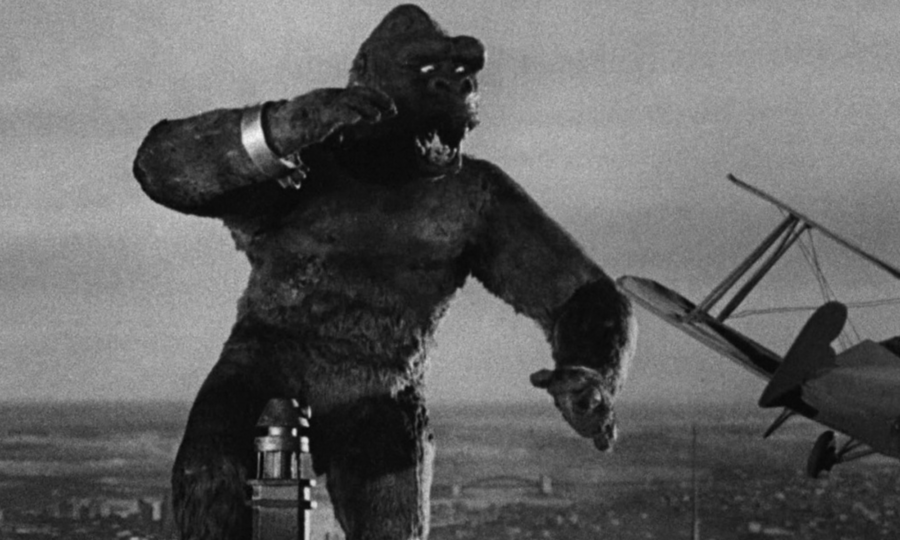
“It was Beauty killed the Beast,” says filmmaker Carl Denham as he surveyed the death of King Kong after Kong took multiple bullets on top of the Empire State Building before falling 102 stories to the ground below. Everything prior to the dramatic ending was an assault (a good one) on moviegoers as Kong’s adventures from Skull Island to New York City represented the first time such special effects were seen on the big screen.
The original King Kong was released in 1933 and starred Fay Wray, Robert Armstrong, and Bruce Cabot, along with a number of dinosaurs that made Skull Island a scary place to traverse. The “Beauty and the Beast” story follows Denham (Armstrong), Jack Driscoll (Cabot), and Ann Darrow (Wray) as they head to Skull Island in hopes of getting on film the legendary Kong. Once on the island, they get much more than they bargained for.
The special effects that have made King Kong one of the all-time great classic films were groundbreaking and included stop-motion animation, rear projection, matte painting, and miniatures. The stop-motion was so time-consuming that the iconic fight between King Kong and the T-Rex took seven weeks to complete.
Publications such as Variety, The New York Times, The New Yorker, and the Chicago Tribune all sang the praises of Kong, which also had famed critic Roger Ebert include the film on his “Great Movies” list.

Reviewer
33. Repulsion
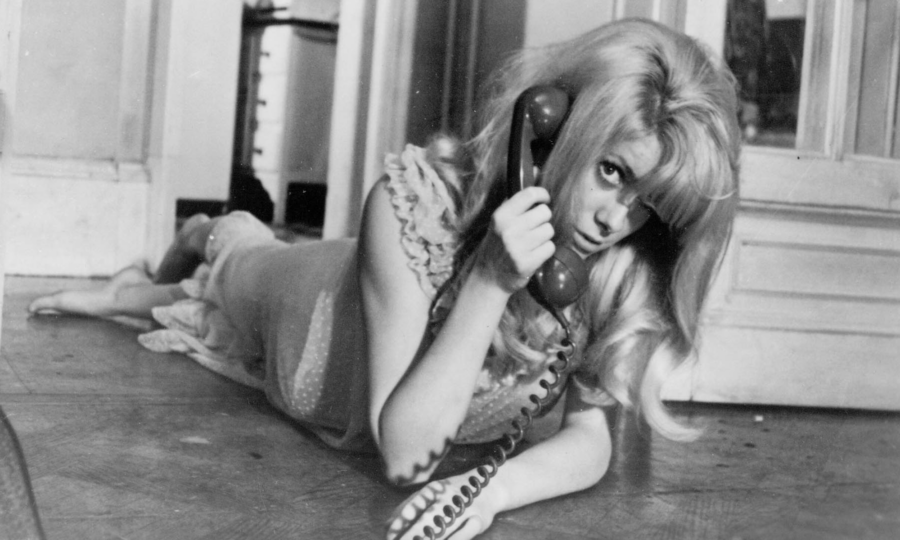
Repulsion was only controversial filmmaker Roman Polanski’s second feature-length film (and his first in English), but he managed to create one of the eeriest and most disturbing films of an entire decade anyway. The 1965 psychological horror film stars French legend Catherine Deneuve as Carol, a beautiful and withdrawn woman living with her sister in London. From the beginning of the film, it is clear that Carol finds even the sight of men troubling, but little could have prepared audiences for just what would come next.
Over the course of Repulsion, Carol gradually loses her sanity while man after man harasses her, insists on speaking to her, and eventually sexually assaults her. But do they? As Carol experiences deeper and more bizarre breaks from reality, the viewer also begins to lose track of what is truly happening and what is only in the woman’s mind, a theme that Polanski would later explore further in horror classics Rosemary’s Baby and The Tenant.
Repulsion is likely most famous for the intensely disturbing scene in which Carol attempts to walk down a dark hallway, only for hands to emerge from the wall and attempt to grab her. It is the kind of image that, once you see it, you will forever be haunted by it. Just like Repulsion itself.

Reviewer
34. The Night of the Hunter
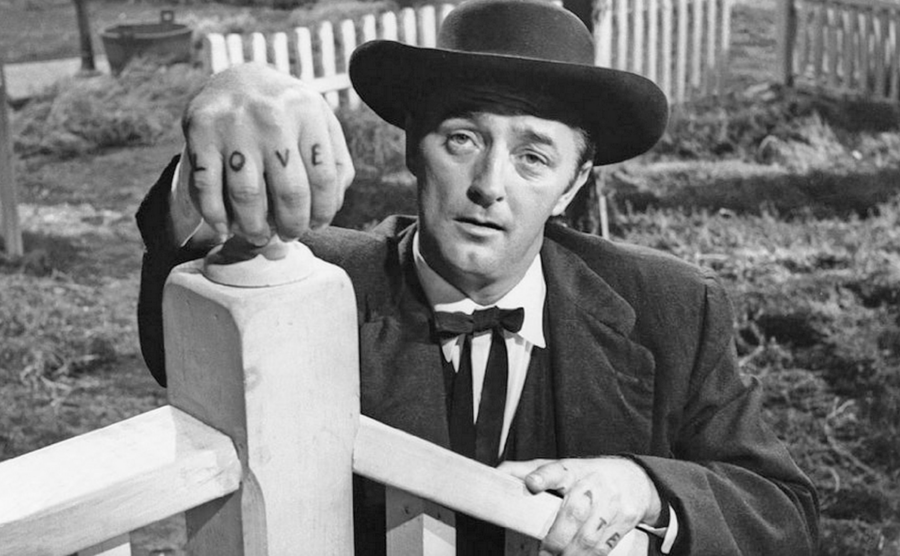
The Night of the Hunter flopped hard on its release in 1955, receiving such negative reviews and apathy from its own studio that legendary actor and first-time director Charles Laughton never directed another film. Decades later, the movie has now been recognized as one of the most interesting and representative film noirs ever made, and perhaps the defining role for its iconic lead actor, Robert Mitchum.
Mitchum stars in The Night of the Hunter as Reverence Harry Powell, a drifter whose easy charm and handiness with scripture disguise his true nature as a misogynistic murderer and thief. A chance jailhouse encounter puts him on the trail of $10,000 hidden somewhere after a bank robber is executed, but the only people who know where it is are the robber’s innocent young children.
Christian groups protested The Night of the Hunter at the time due to the depiction of a self-proclaimed man of the cloth being an unrepentant, malevolent serial killer. That was a bit of a blind spot, considering how much the dwells on themes of religion and morality, down to the parable Mitchum tells of the now-iconic LOVE and HATE tattoos on his hands.
It may not have gotten its due at the time, but The Night of the Hunter has far outlasted those protests.

Reviewer
35. The Good, The Bad, and The Ugly
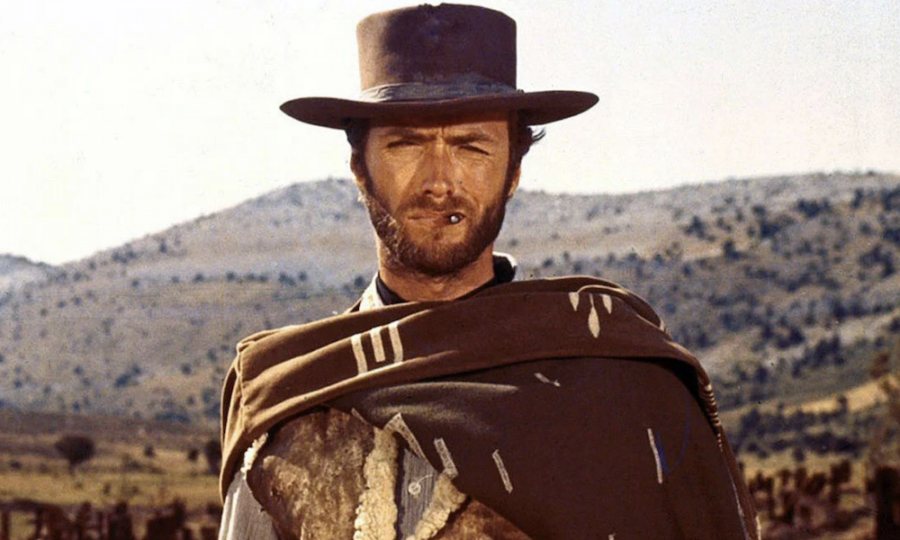
The Good, the Bad, and the Ugly is the third film in Sergio Leone’s “Man with No Name” trilogy, though it is actually a prequel to the first two films, A Fistful of Dollars (1964) and For a Few Dollars More (1965). The reason for this is that The Good, the Bad, and the Ugly is set as the Civil War continues its bloody existence while the two earlier films take place after the Civil War has ended.
Regardless of when the film takes place, The Good, the Bad, and the Ugly is considered the best of the bunch and the film that launched Clint Eastwood into stardom.
Along with Eastwood (the Good), the film also stars Lee Van Cleef (the Bad) in his second film with Leone and Eastwood, and Eli Wallach (the Ugly). The film tells the story, in Sergio Leone’s sweeping widescreen cinematography and impossible close-ups, of three gunslingers who, during the bloody Civil War, are searching for a fortune in Confederate gold.
Although the film was a box office smash, bringing in over $38 million, the critical acclaim for the film did not come until much later. Spaghetti westerns, at the time, were not highly thought of, critically speaking.
Over the years, though, The Good, the Bad, and the Ugly has since been called the “definite Spaghetti Western” which led Eastwood to other western hits such as The Pale Rider and Unforgiven. The Good, the Bad, and the Ugly has reached legendary status as far as westerns in general go.
The general consensus surrounding Eastwood’s third time as the Man with No Name is that it’s “Arguably the greatest of the spaghetti westerns, this epic features a compelling story, memorable performances, breathtaking landscapes, and a haunting score.”

Reviewer
36. Pinocchio
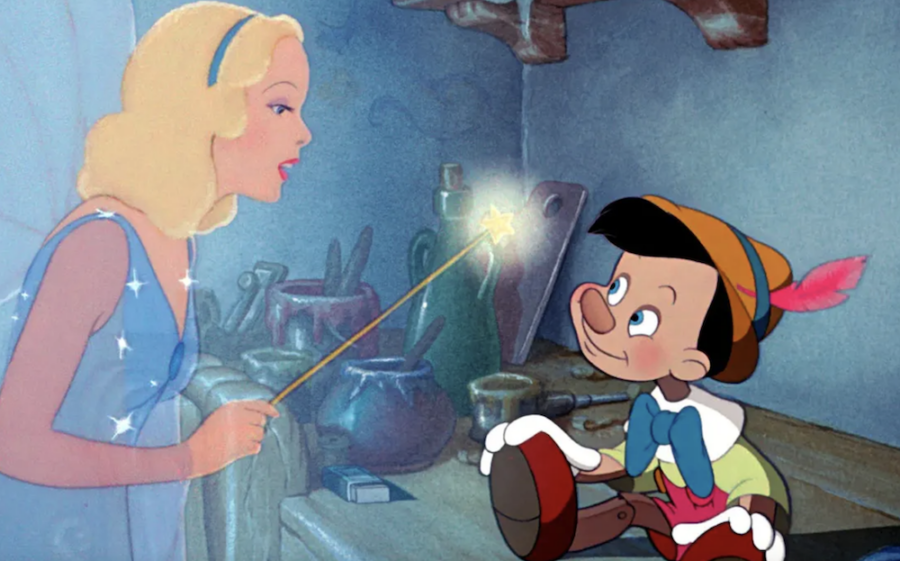
Pinocchio was Walt Disney’s second animated feature, following the success of Snow White and the Seven Dwarfs three years earlier. While Snow White has darker elements to the film (like a stepmother hiring a hitman for her daughter, for instance), Pinocchio is known as one of Disney’s darkest animated films in the entire company’s catalog, even though the source material was darker.
While Pinocchio remains a terrifying film when looked at on a deeper level, this darkness is a big reason why the animated feature deserves its spot with the rest of the best classic movies.
The depth and dimension brought to life in Pinocchio proved that animated features could tell a story just as real as a live-action project. The gripping tale of a puppet brought to life and the challenges he faced while on his quest to become a real boy was enough to keep the audience’s eyes glued on the screen. And that was without noticing the improvements to the animation Disney and his team had dreamed up after learning from their experience in Snow White.
No longer was the animation stuck in simple perspective, but Disney had created a few new innovations that once again would change the game for animators everywhere. Using the “multiplane camera” invented by Disney, animators were given the freedom to broaden the viewer’s perception and include new angles, like the aerial views over Pinocchio’s village.
Additionally, animators figured out that they could imply that space existed outside of the screen by showing characters only “half-seen” on the edges.
These new discoveries in animation led Pinocchio to have even grander artwork than the beautiful landscapes shown in Snow White and also inspired animation filmmakers to continue experimenting with the new genre Disney had created only a few years before.

Reviewer
37. Rashomon
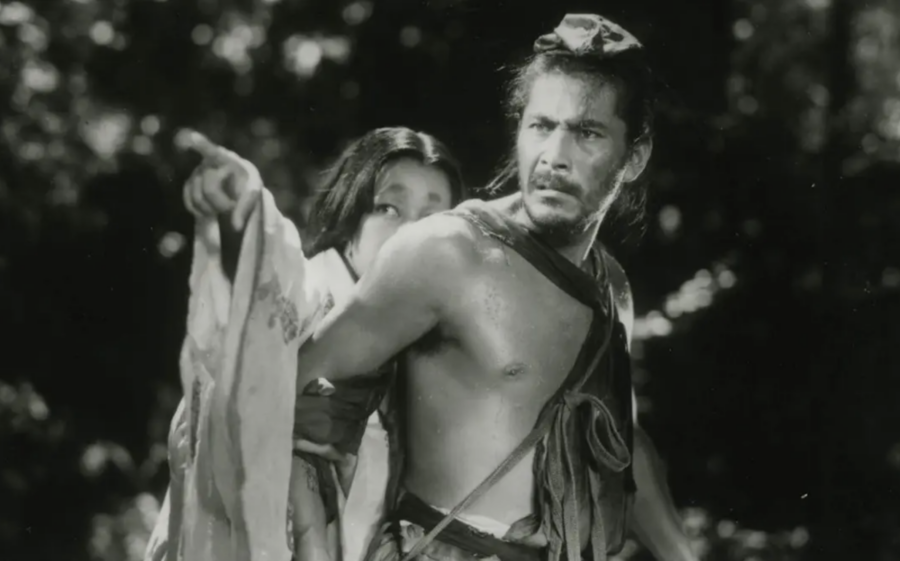
There are some films that simply defy the art form to become more. Akira Kurosawa’s Rashomon is one of those films and it is easy to see why this film is consistently ranked as one of the all-time great classic films. It was made in 1950 and for a quite complex flick, the settings surrounding the movie are very simple.
Rashomon is about reality and perception, truth and how it can be manipulated, told from four different points of view – the bandit’s story, the wife’s story, the samurai’s story, and the woodcutter’s story. Each follows the rape of the wife and the death of a samurai, but as each story unfolds, coming to a conclusion as to whose story is the truth is the glorious picture Kurosawa has painted.
Rashomon was the very first Japanese film to be fully recognized internationally. At the 1951 Venice Film Festival, it won the Golden Lion Award and at the 1952 Academy Awards, Rashomon won an Academy Honorary Award.

Reviewer
38. Snow White and the Seven Dwarfs
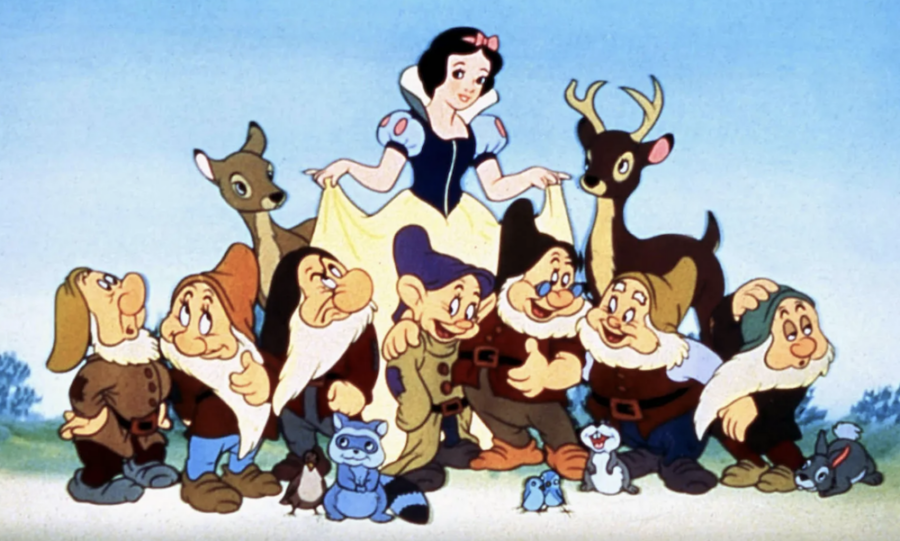
Before Walt Disney enlisted a team of 750 animators, assistants, and background artists to sketch out more than two million pieces of art for the creation of Snow White and the Seven Dwarfs, a feature-length animation had never been done before.
Many thought that Disney was insane to attempt to make this film, and insane though he may have been, Good Ol’ Walt went through with it anyway. Now, 86 years after the release of the film that saved Disney’s career and changed cinema forever, Snow White is one of the best classic movies ever made.
Always an innovator, Disney hired a team of chemists to create the 1,500 custom shades of color that appear in the animated film. This was but one of the innovations Disney used while making the film that would earn him an Academy Honorary Award. While critics believed Snow White would become “Disney’s folly” before its theatrical release, the first animated feature ever turned out to be one of the most successful films of all time, charming children and adult viewers alike.
Not only did Disney excel at something no one believed could be done, but in making Snow White, the 36-year-old animator from Chicago created a brand new film genre that would go on to inspire millions of children for generations to come.

Reviewer
39. Nosferatu
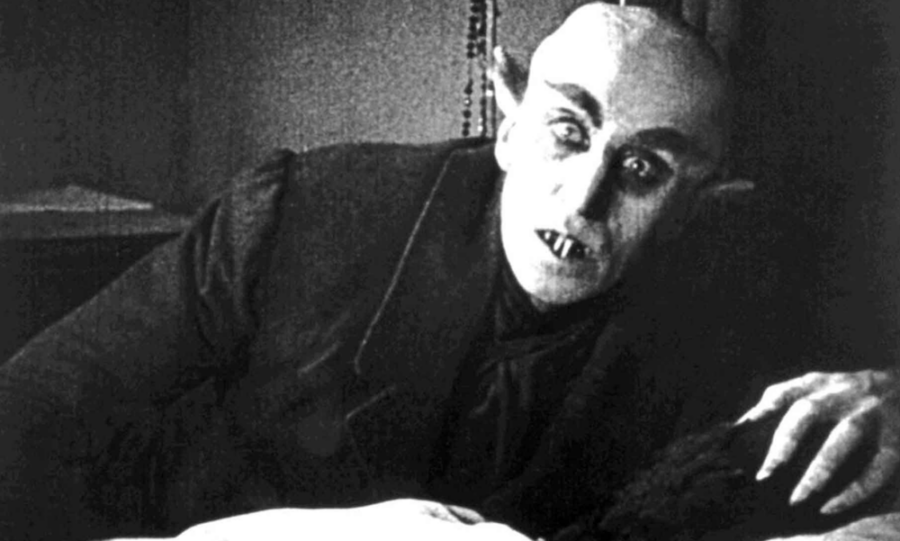
It is horrifying to think that the world almost lost Nosferatu after it had barely been released. Now one of the most famous silent movies ever made, 1922’s Nosferatu: A Symphony of Horror is an unauthorized adaptation of Bram Stoker’s Dracula, the novel that essentially codified the idea of a vampire in the Western world. Stoker’s widow, fiercely protective of her husband’s legacy, successfully sued after learning of the film and demanded all copies of the film be destroyed.
Not a single complete print of the film survived, but enough reels managed to escape destruction to create a composite. Thus, Nosferatu was able to take its rightful place in history as one of the greatest early horror films. The terrifying image of actor Max Schreck as Count Orlok has haunted cinemas for over a century, cementing the feral, inhuman appearance of vampirism in popular culture.
Nosferatu has been remade several times (notably by German director Werner Herzog with Klaus Kinski as Orlok), with another currently in development by director Robert Eggers. It is a mark of how filmmakers and audiences simply cannot forget Nosferatu, even after its near-destruction and the vast changes in filmmaking since its release. Just like a vampire, Nosferatu is unkillable.

Reviewer
40. Anatomy of a Murder
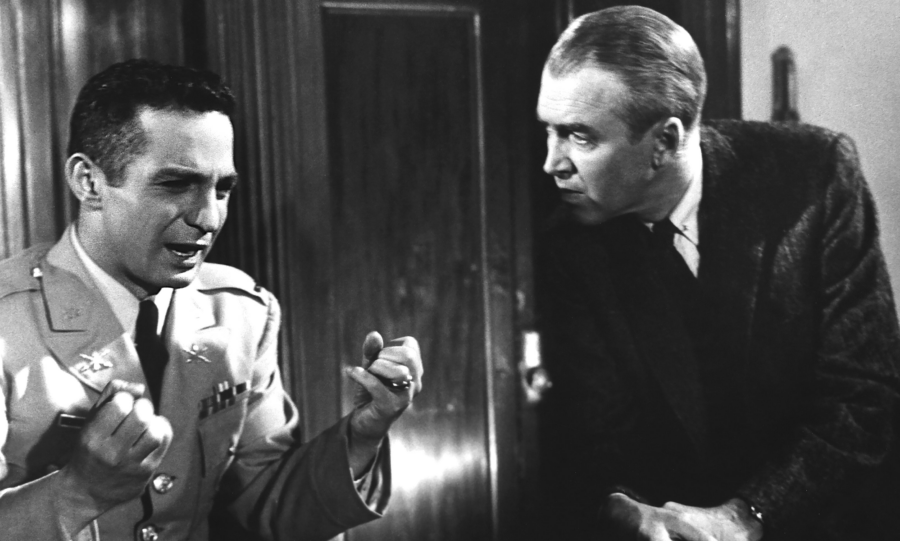
The last hundred years have seen the creation of many great courtroom films. Some of them even appear on this list of the best classic movies (see 12 Angry Men), but none of them have been as realistic or as groundbreaking as Otto Perminger’s Anatomy of a Murder.
Anatomy of a Murder’s extreme realism in court comes from the fact that the film is based on a novel by the same name written by Michigan Supreme Court Justice John D. Voelker (under the pen name Robert Traver) about a real-life court case in which Voelker was the defense attorney. The movie depicts the trial of a man who is claiming irresistible impulse (similar to temporary insanity) as his defense against murdering a man who raped his wife.
Since the film’s release, it has gone on to be named one of the best trial films of all time by the American Bar Association and is often used for education in law school. Controversial, at the time of its release, for the use of words never before heard on-screen (like “contraceptive” and “climax”), the film was banned briefly before a lawsuit proved that these words were essential to the film’s context.
In addition to showing the behind-the-scenes of an attorney at law within a real court case, the film also displayed a protagonist whose main features included stealth, trickery, and deceit—something that had not often been done before.
As a film that portrays great acting, captivating and innovative storytelling, and shows the justice system in a light never before seen, it is no wonder that Anatomy of a Murder has gone down in history as one of the best classic movies.

Reviewer
Great Movies That Just Missed The List
- Philadelphia Story
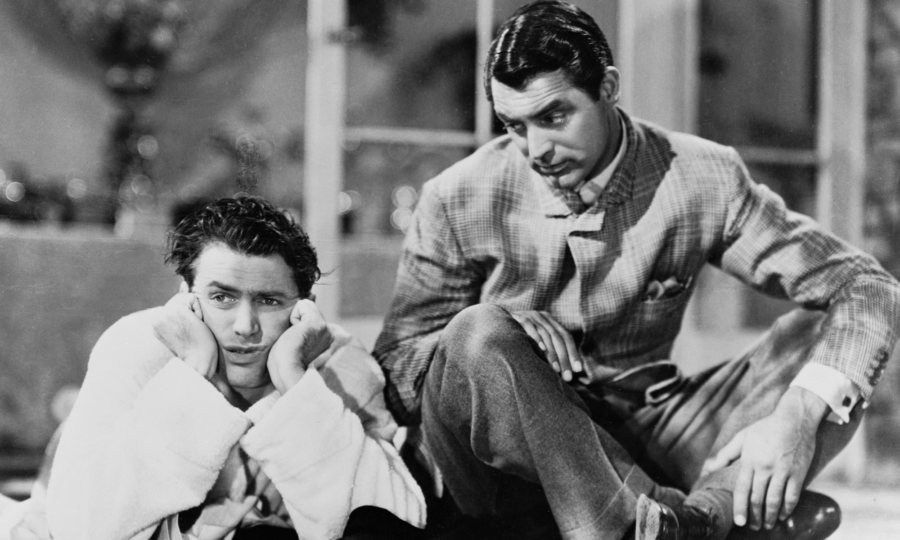
Who would have thought Katharine Hepburn was once considered box-office poison, but that is where she found herself two years prior to The Philadelphia Story being released in 1940? The film, considered to be one of the all-time great romantic comedy classics, ended up being one of Hepburn’s biggest hits. Along with Hepburn, the film also starred Hollywood legends Cary Grant and Jimmy Stewart.
The film was considered part of a popular genre at the time, the comedy of remarriage, which is a story where a couple gets divorced, they then flirt with other outsiders and then ends up getting remarried. This story-telling device was a popular way of showcasing extramarital affairs at a time when showing these types of affairs on screen was blocked by the Motion Picture Production Code.
The Philadelphia Story follows Tracy Lord (Hepburn) as she navigates life after her first marriage to Dexter Haven (Grant) ended and her upcoming wedding to the super-rich George Kittredge (John Howard). When George sees Mike Connor (Stewart) carrying a drunk Tracy into the house, he assumes the worst is going on. As Tracy is calling off her nuptials to George, Dexter arrives just in time.
The film was directed by George Cukor, the man who famously started Gone with the Wind, but because he and Gone with the Wind star Clark Gable did not get along, Cukor was famously replaced by Victor Fleming. The Philadelphia Story was a critical hit with particular attention paid to the witty script and deft direction.

Reviewer
- Frankenstein
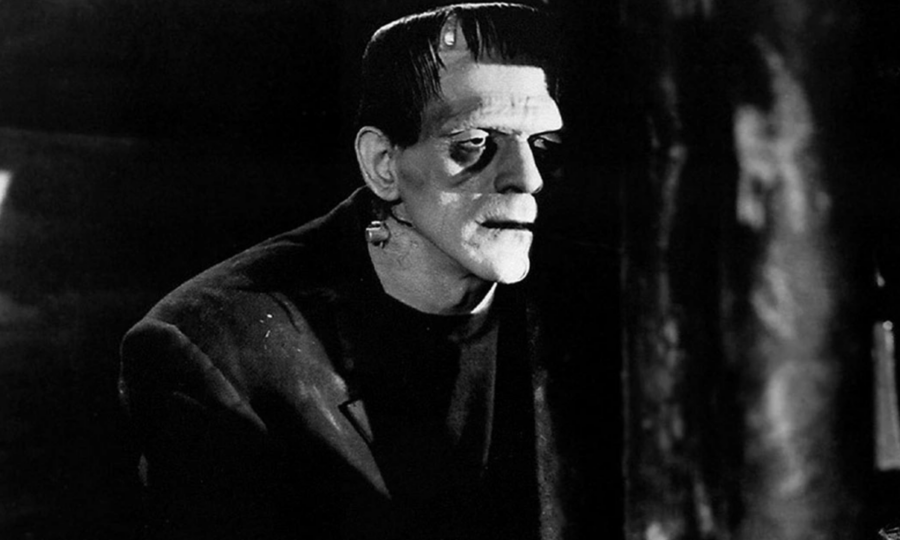
It is always remarkable when a film adaptation becomes the definitive story in the public’s mind, and all the more remarkable when the source material is one of the most famous works of Western literature. That is the case with 1931’s Frankenstein (which, to be fair, was adapted from a stage play version of Mary Shelley’s novel), which has come to dominate the tale of a creature brought to life by unholy science more than any other version of the story.
James Whale directed Boris Karloff in Frankenstein in a way that would define their legacies forever. Not as the lumbering, cartoonish brute that later films would portray him, but as a tragic, uncertain figure. The question of whether the scientist (Colin Clive)or his creation is the true monster will eternally be debated, but there is no question in the film that the Creature is a true innocent in a world that does not understand or care about him.
Frankenstein was both a critical and commercial success and (along with Bela Lugosi’s Dracula) essentially codified the cinematic horror genre. The image of Boris Karloff’s dead-eyed Creature rising to life terrified and fascinated viewers in 1931, and it holds no less power in the current day.












